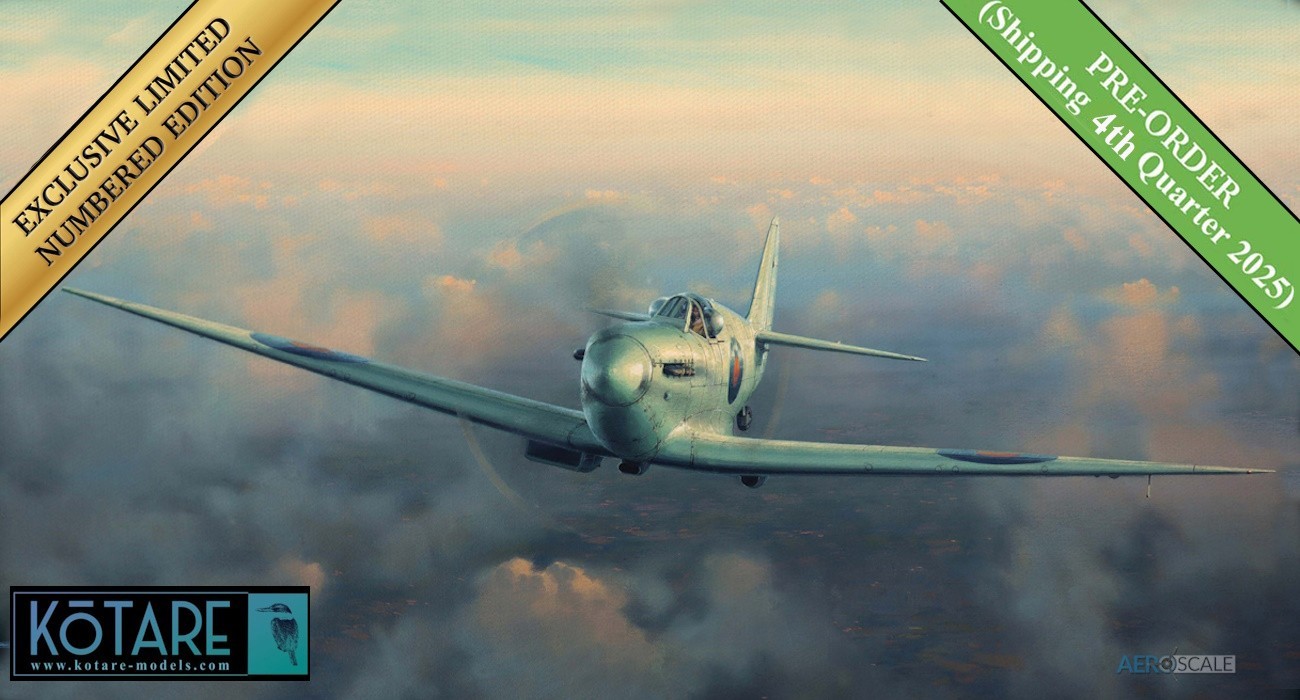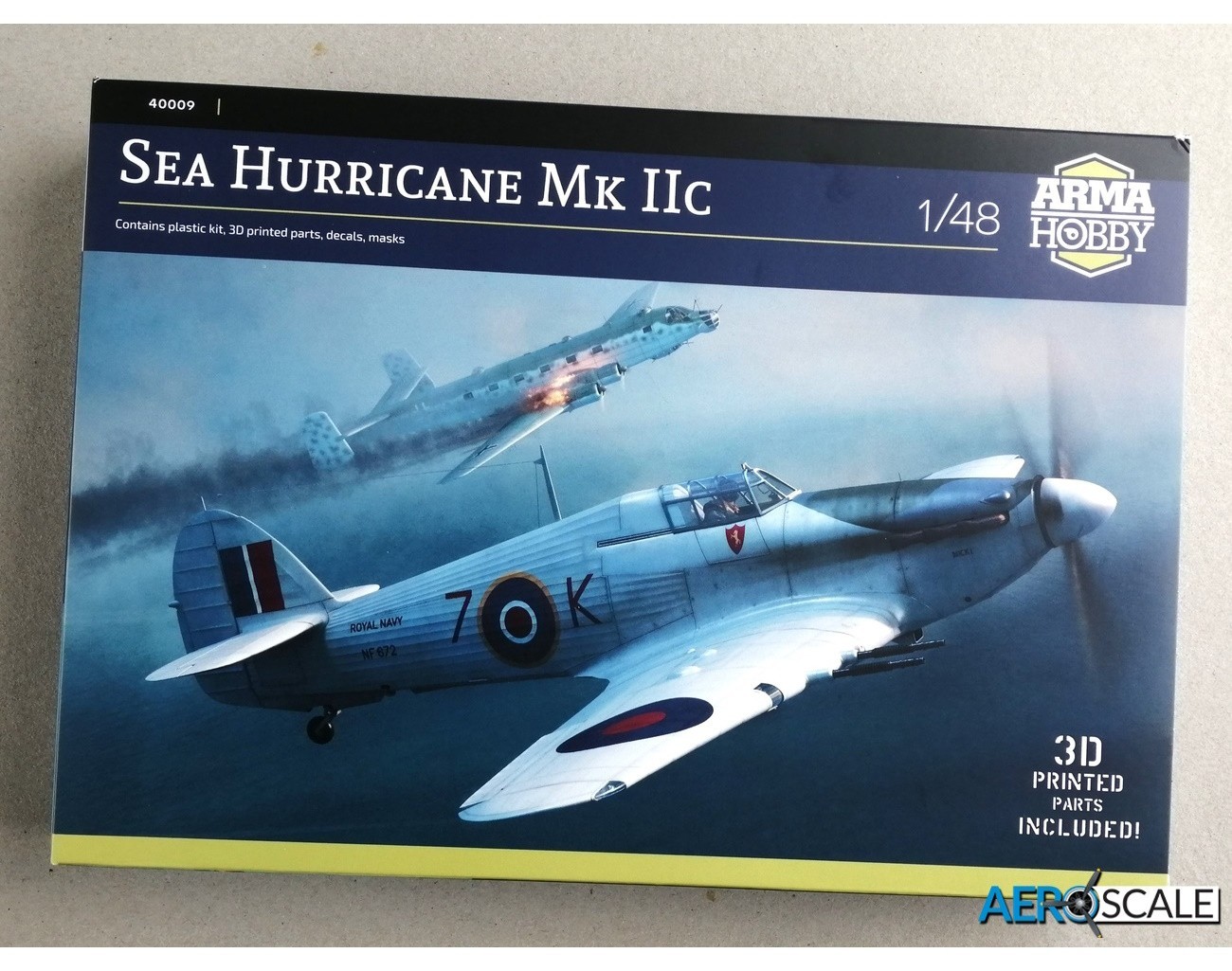
Background
The Merlin XX powered Hurricane Mk IIc played an important role for the Royal Navy as a fighter. The RN was seriously handicapped in its operations with the fleet fighters of the time such as the Blackburn Roc and Fairey Fulmar. The Admiralty desired a fleet fighter capable of flying more than 300 mph. Navalised Spitfires was the first choice, but the Spitfire was prioritised to the RAF. The Admiralty had no choice but to go for the Hurricane. Around sixty Sea Hurricane Mk.IIc’s were built and a further fifty Mark.IIb’s were converted to Mk.IIc’s. The canon fitted Sea Hurricane filled an important role protecting Atlantic convoys, reinforcing the air defence of Malta and providing aerial support in north Africa during ‘Operation Torch’. The Sea Hurricane would be eventually replaced by the Grumman Hellcat/Martlet.
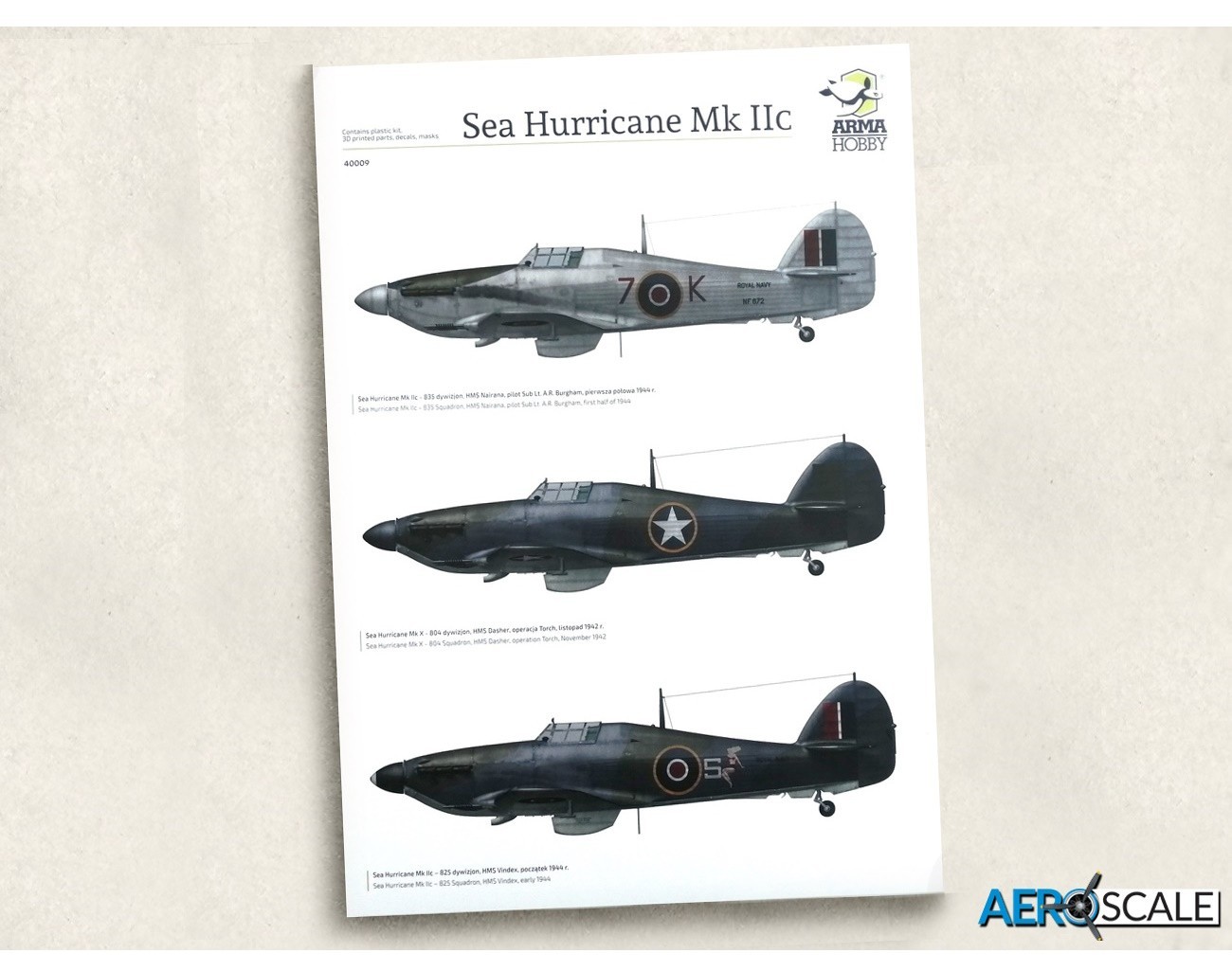
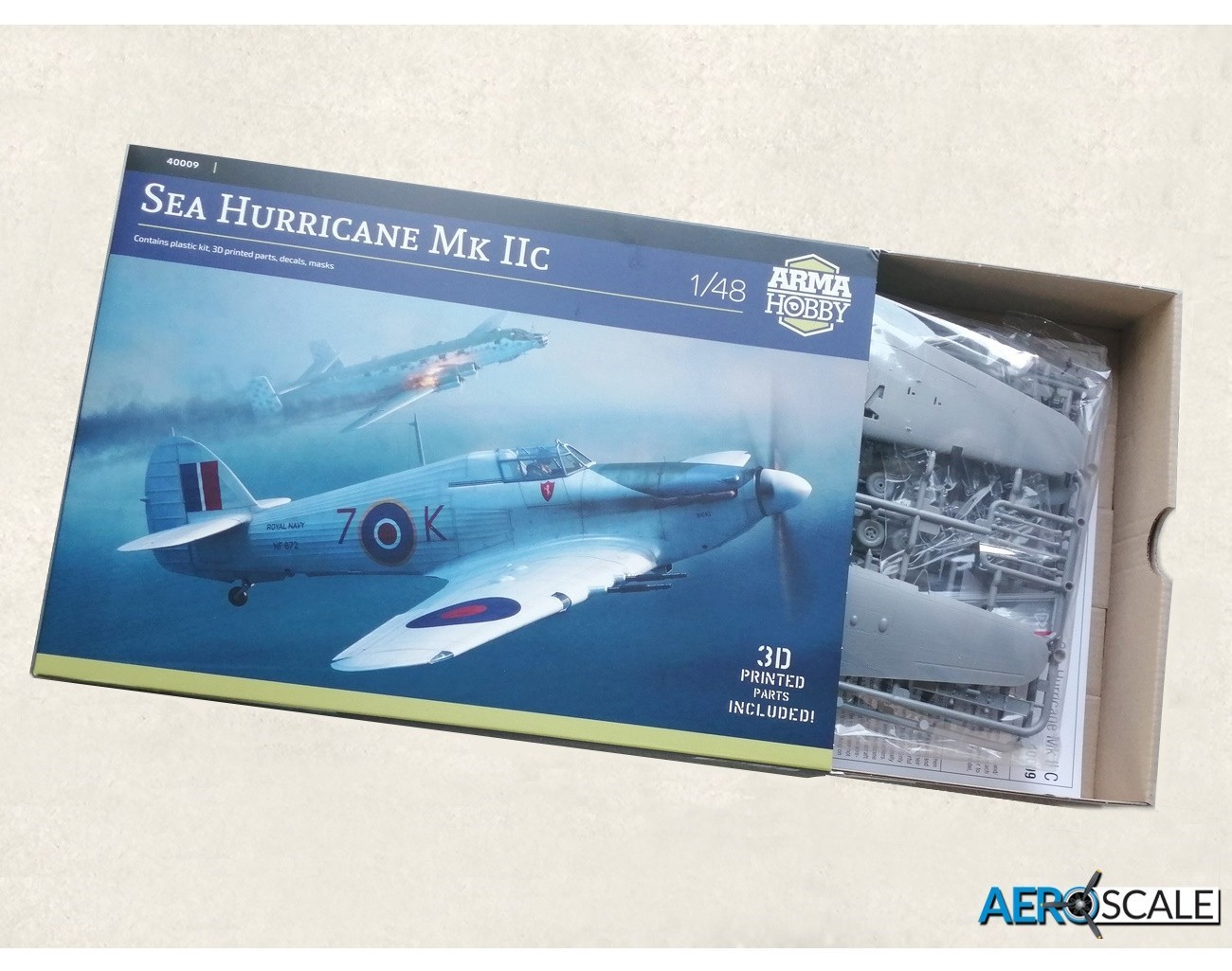

This edition from Arma Hobby has three marking options: two for the Sea Hurricane Mk.IIc and one for the Canadian built Mk.X.
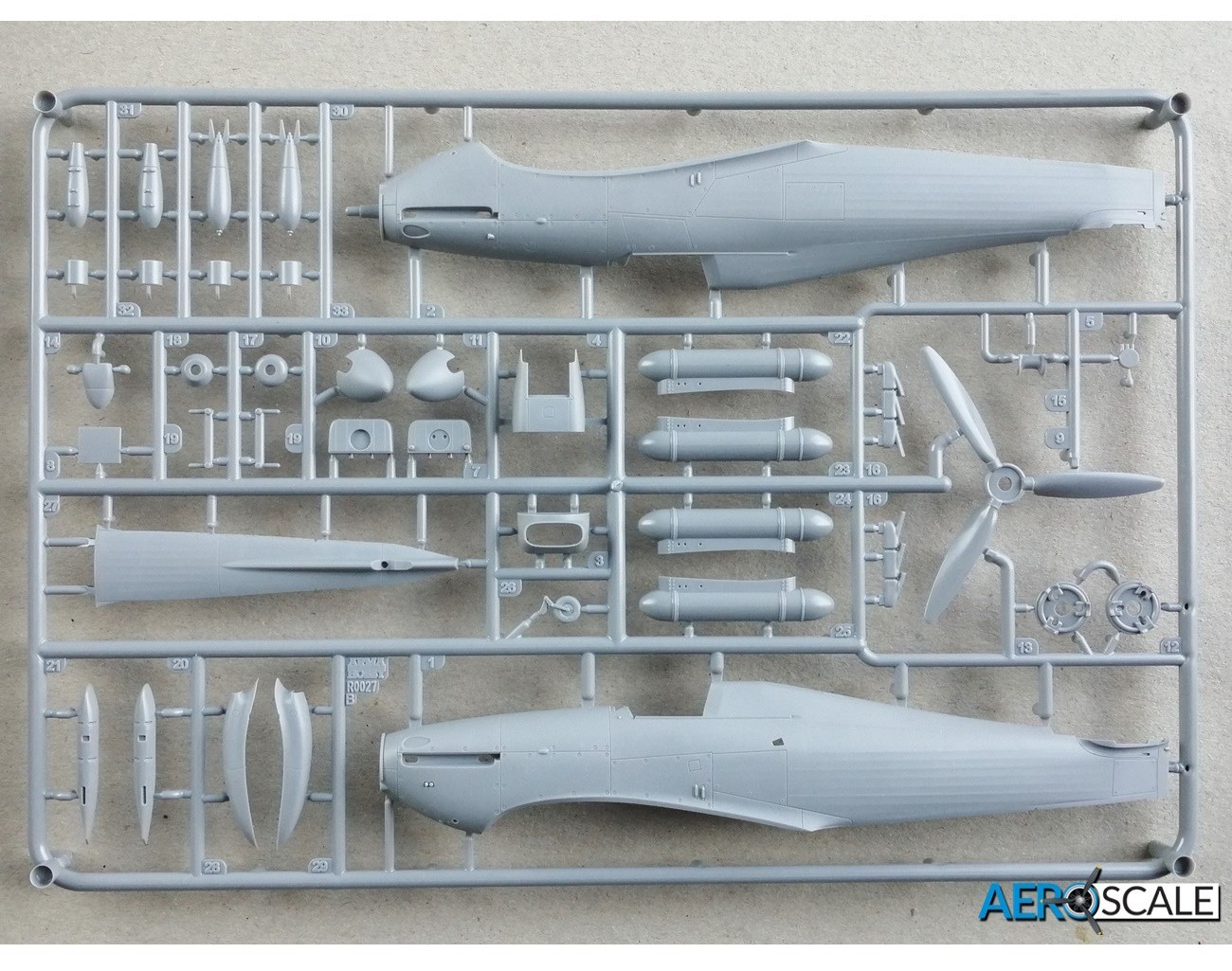
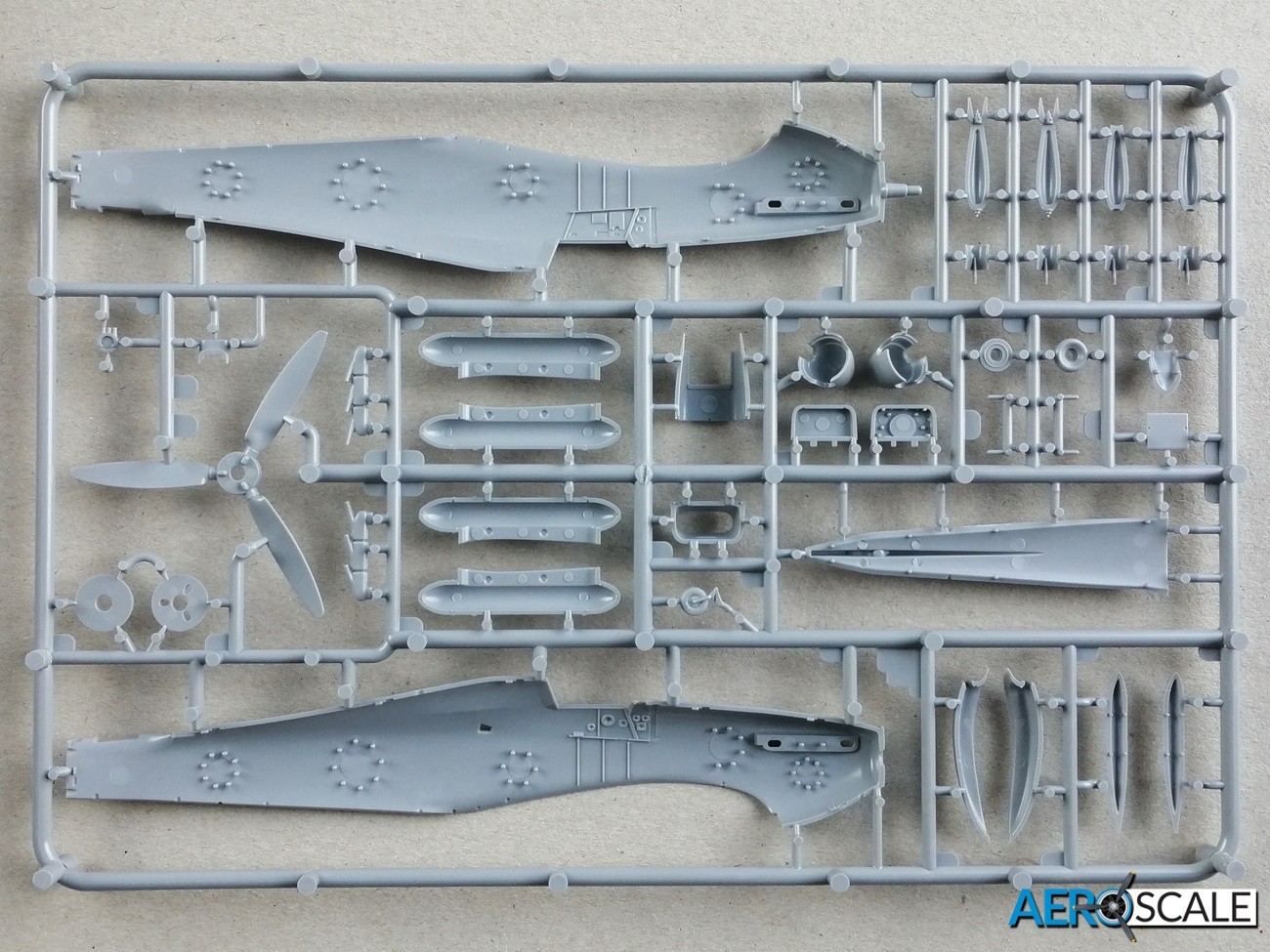

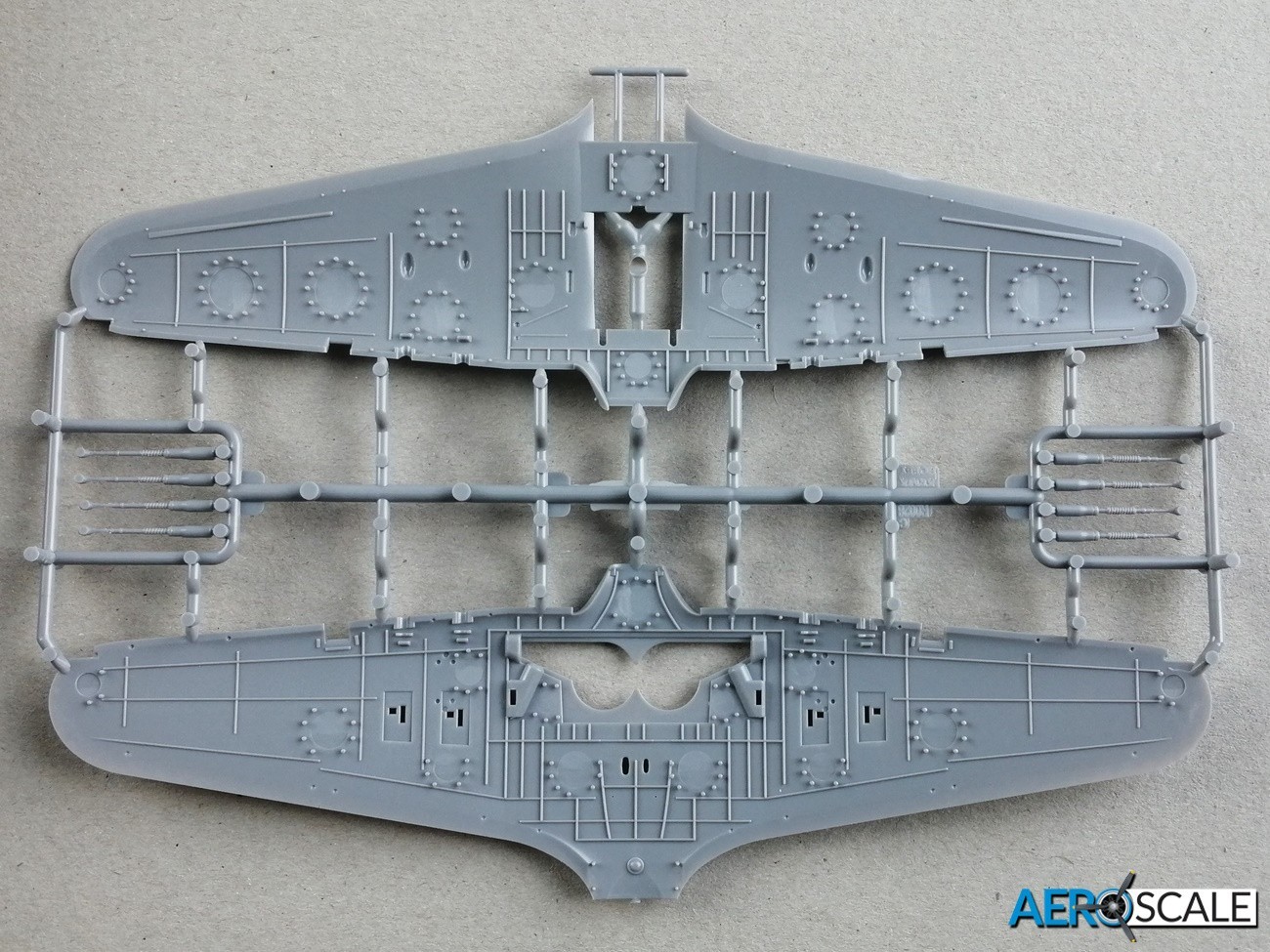

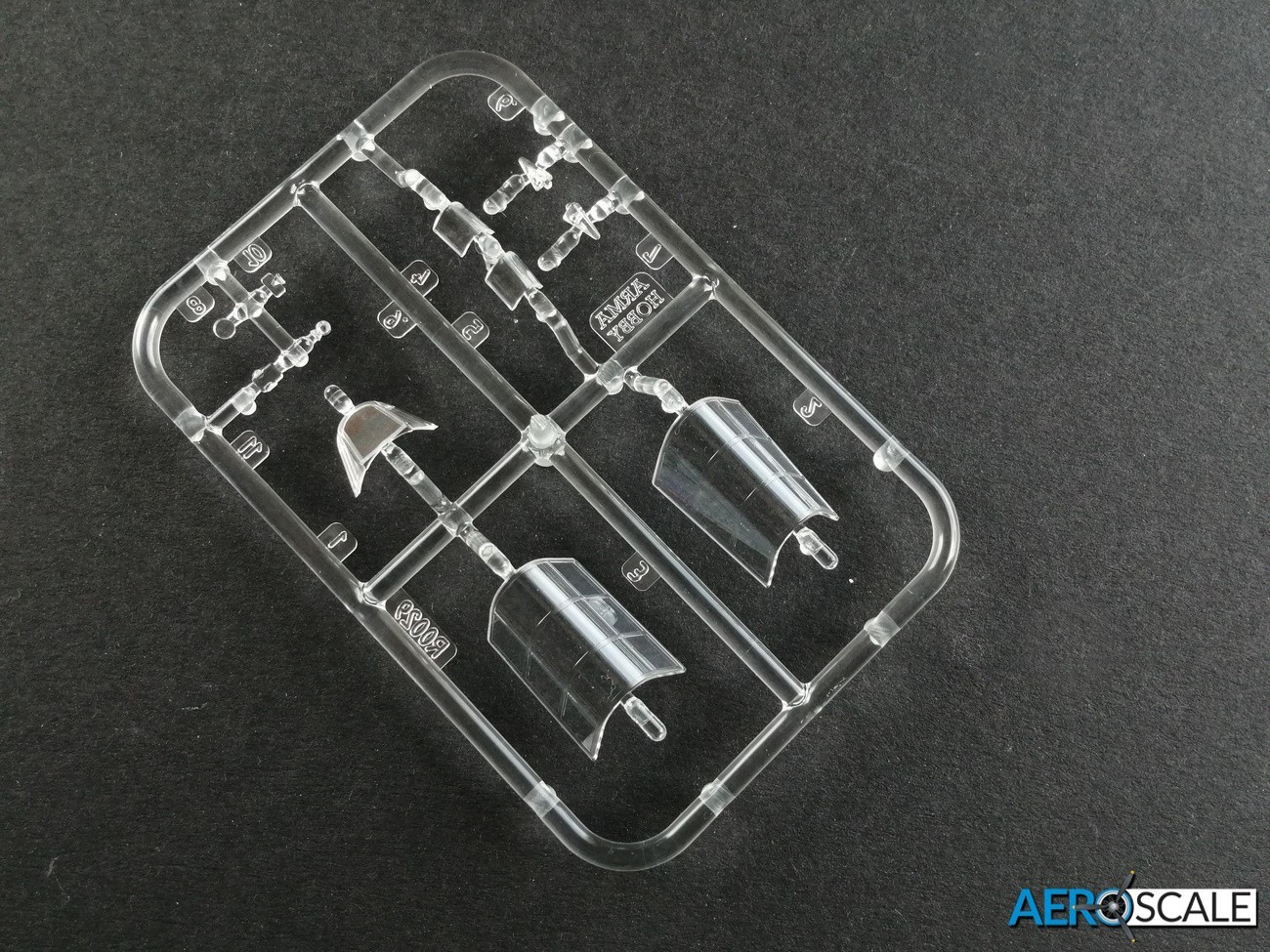
The Kit
Although the kit comes in a side opening box, the kit contents are placed in a sturdy pull out tray. The tray provides a lot of structural strength, particularly important if you are adding this kit to a stash whether you are a builder or collector. The 3D parts are bagged separately and are protected by card, placed in one of the corners of the tray.
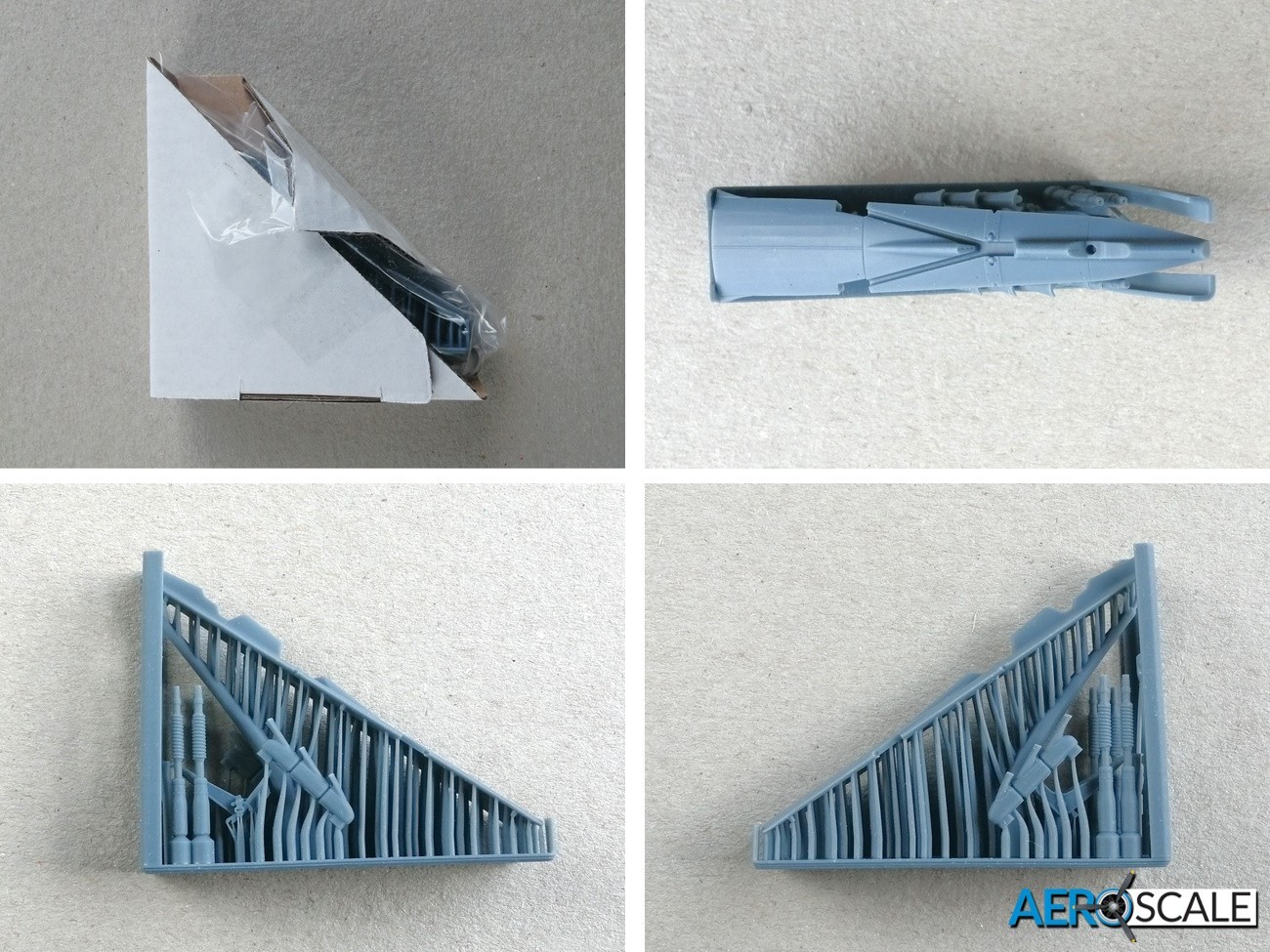

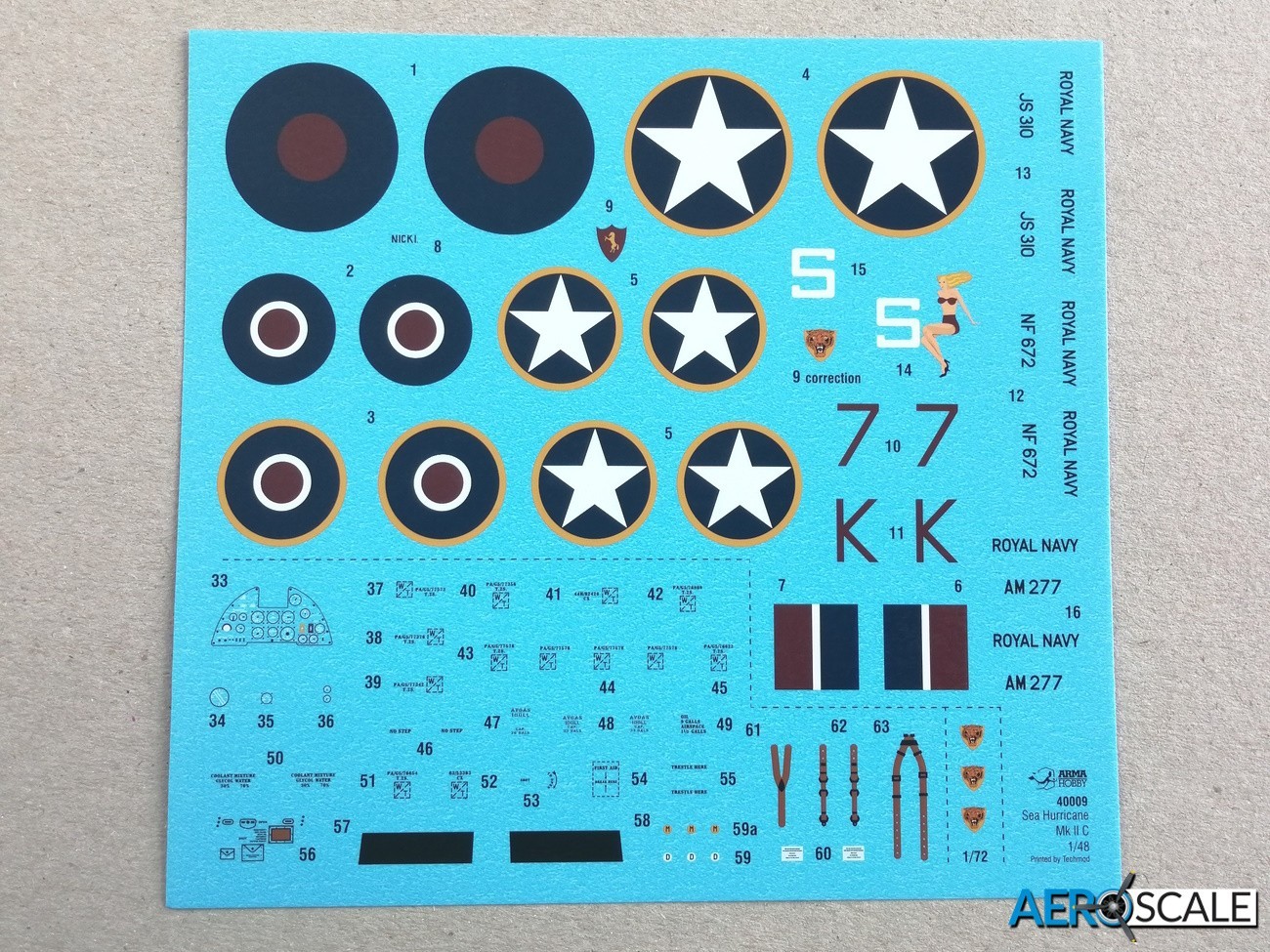
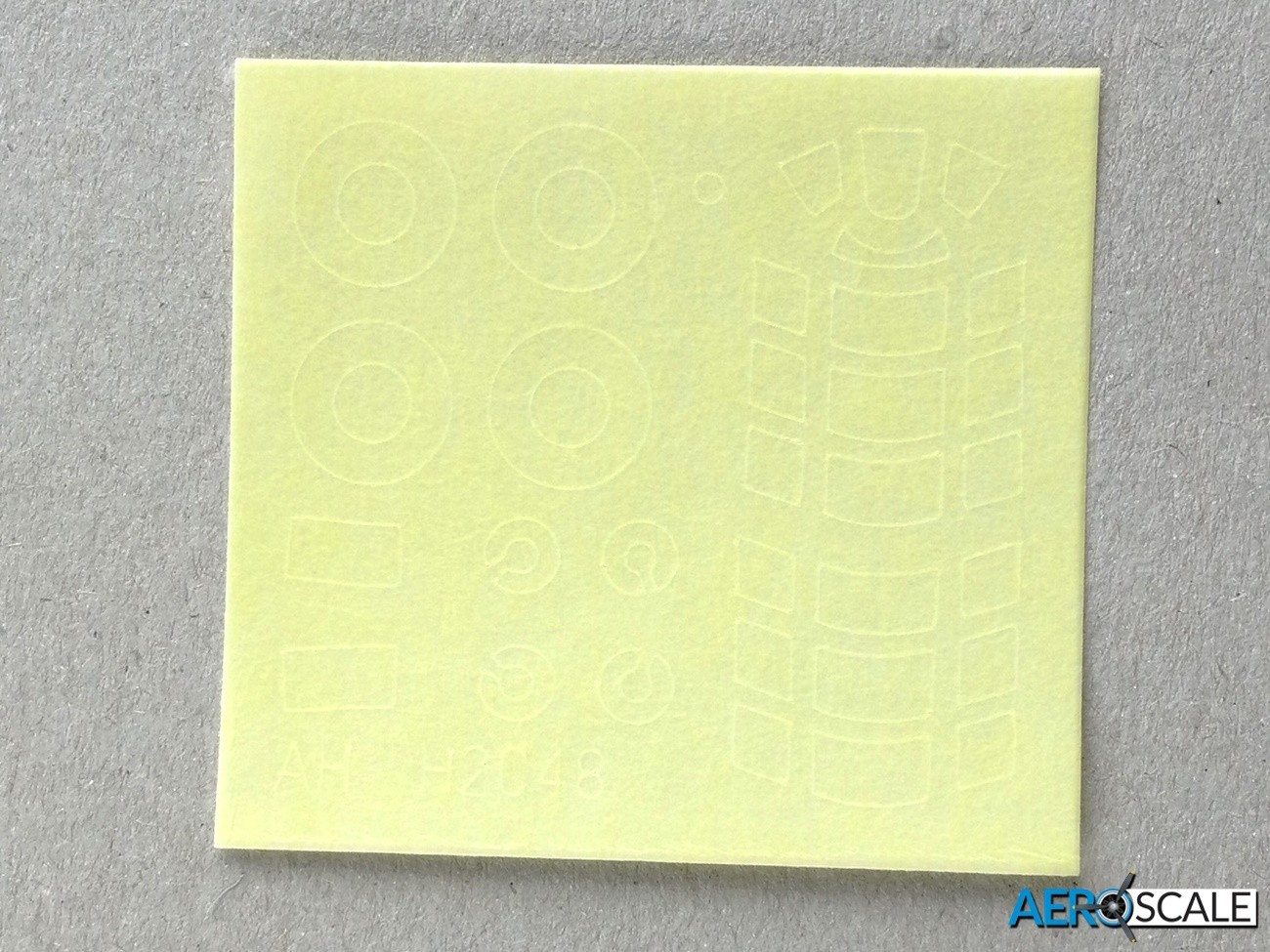
The first glimpse of the kit itself reveals crisp recessed and raised detail resulting in lots of stunning detail. The surface of the plastic has restrained panel lines, flush and raised rivets, as well as the fasteners and piano hinges for access panels. The fuselage of the Hurricane Mk.II has a mix of canvas and metal skinning, which is replicated beautifully on this release The rear of the fuselage, tail and control surfaces has a hint of the stretched fabric. Detail of various areas including the cockpit and undercarriage bay are well thought out. Arma Hobby has were possible created individual parts rather than rely on low relief detail, achieving a more realistic look. Arma Hobby do not rely on photo etched parts for additional detail, probably much to the relief of many modellers.
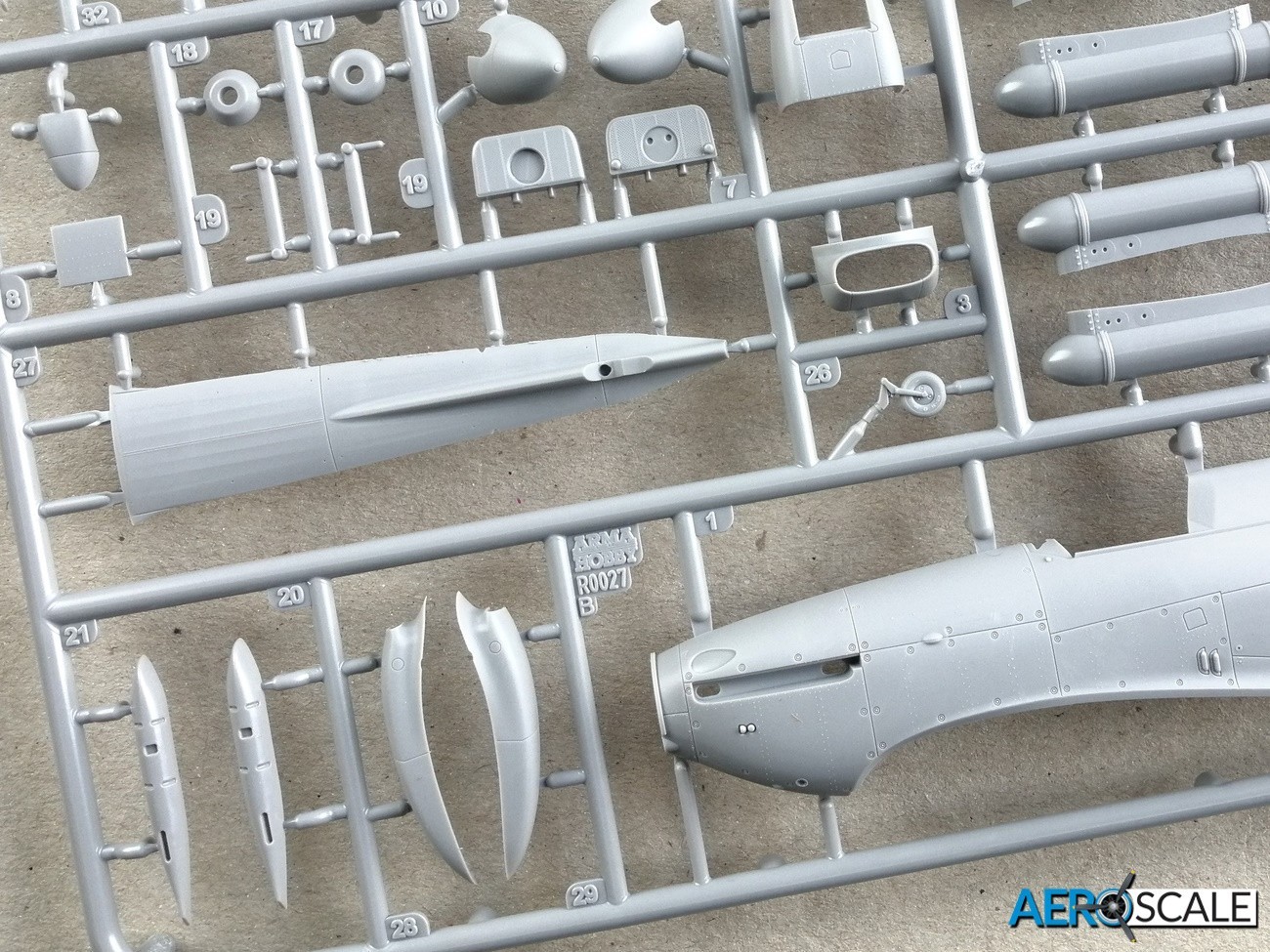
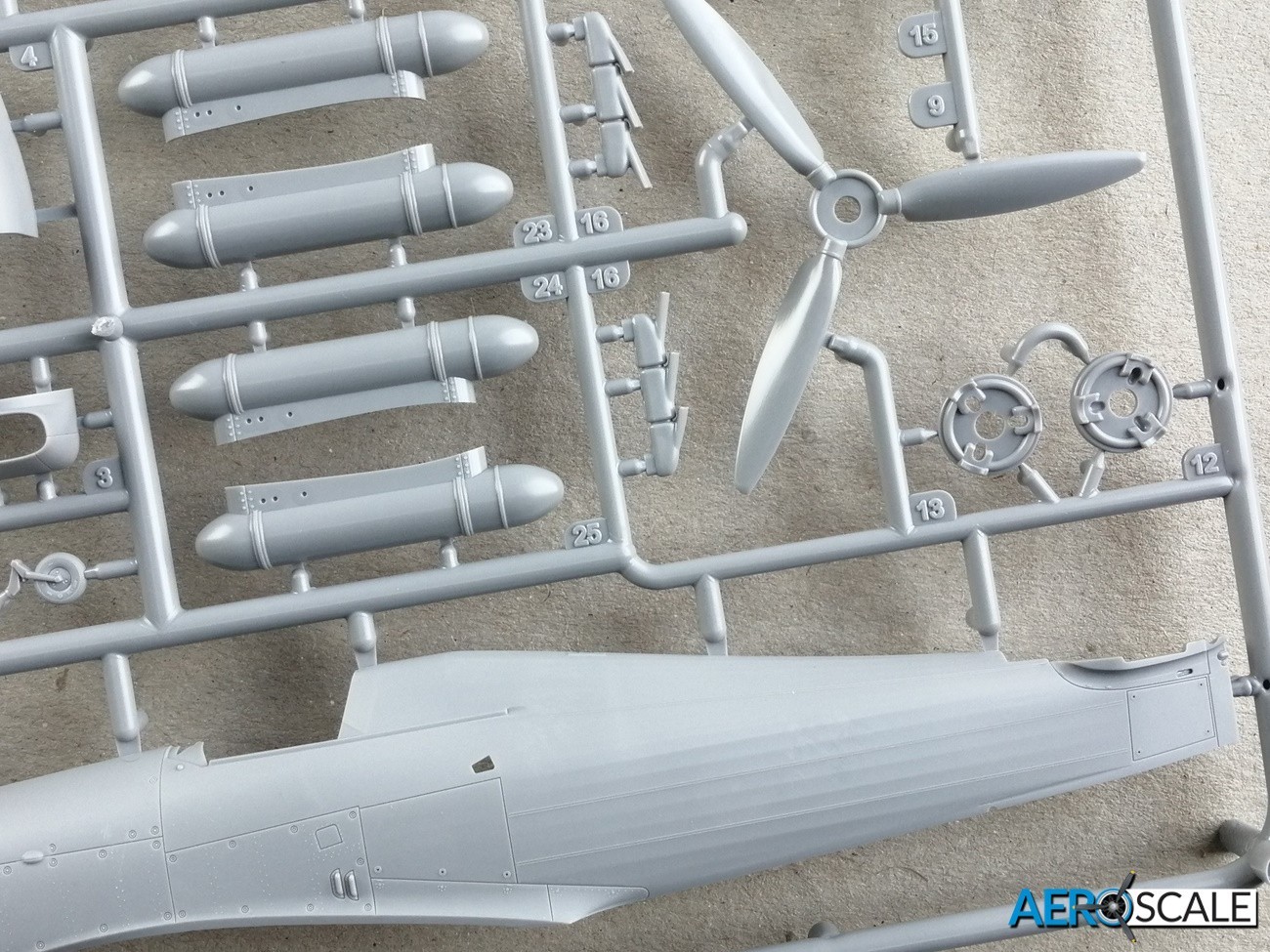
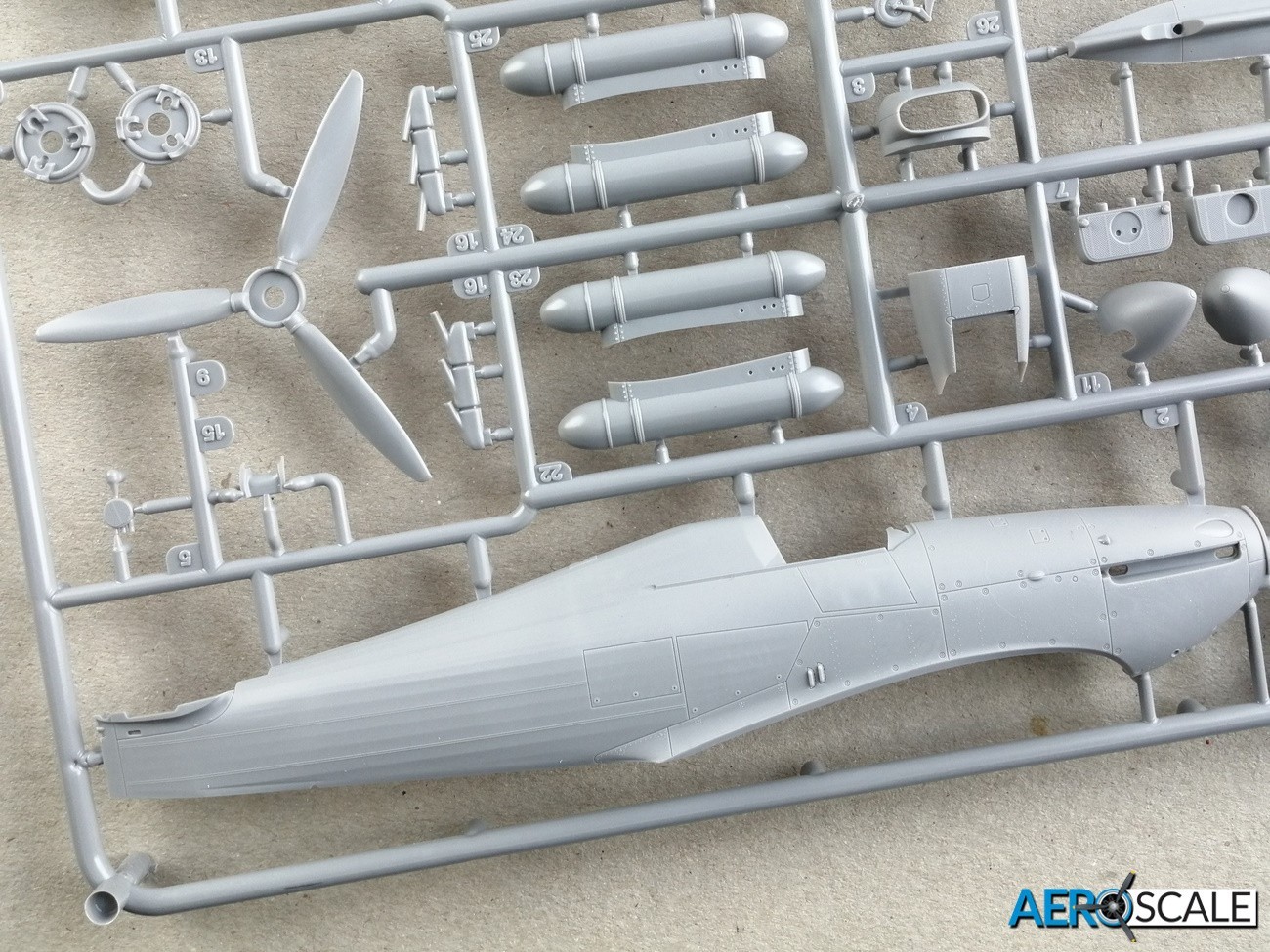

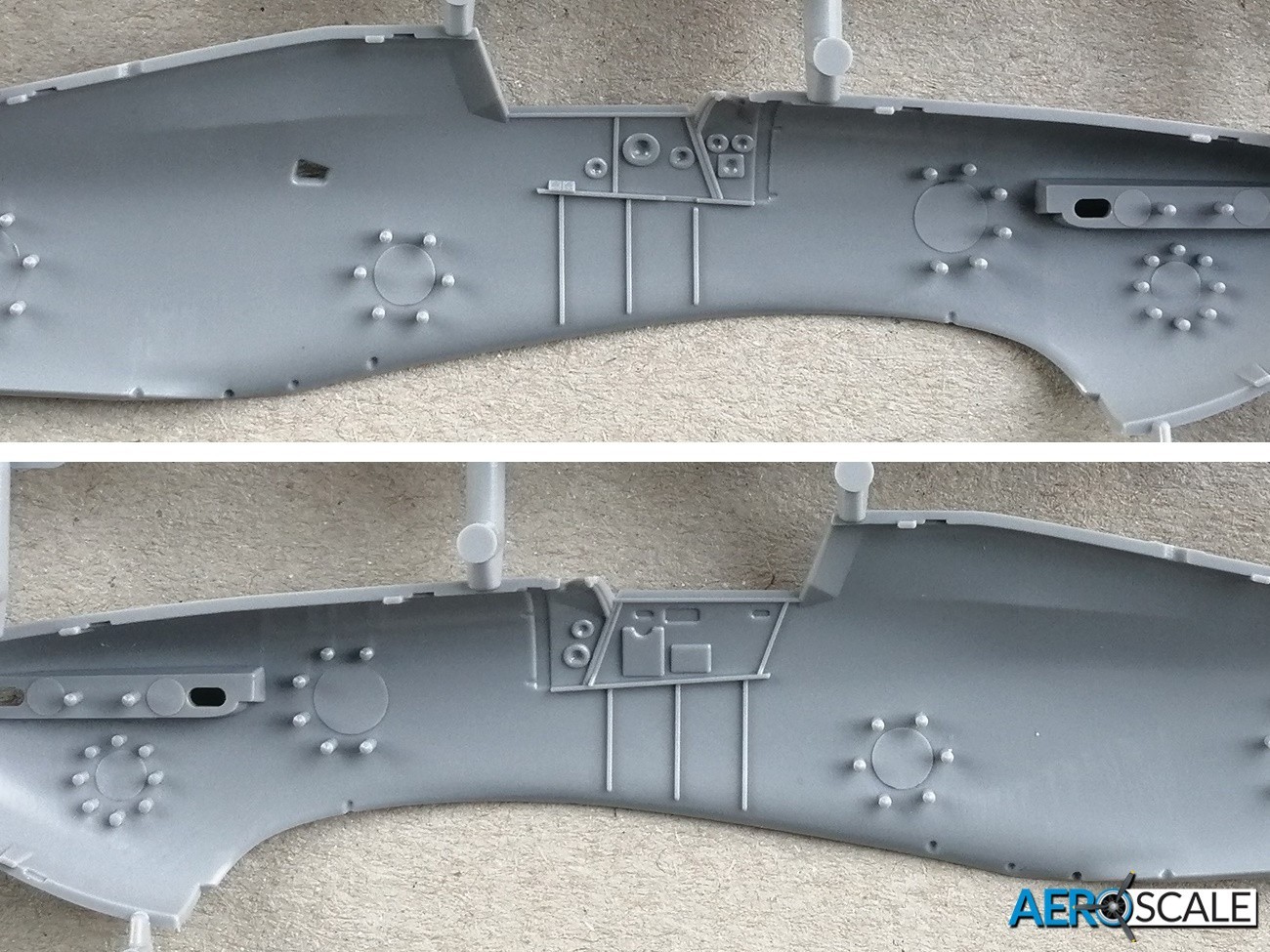
Contents of this 1:48 scale kit includes:
- 3 x grey plastic sprues
- 1 x clear plastic sprues
- 1 x block of 3D printed parts
- 1 x sheet of paint masks
- 1 x sheet of decals
- 1 x A4 12-page instruction manual
- 1 x Errata sheet
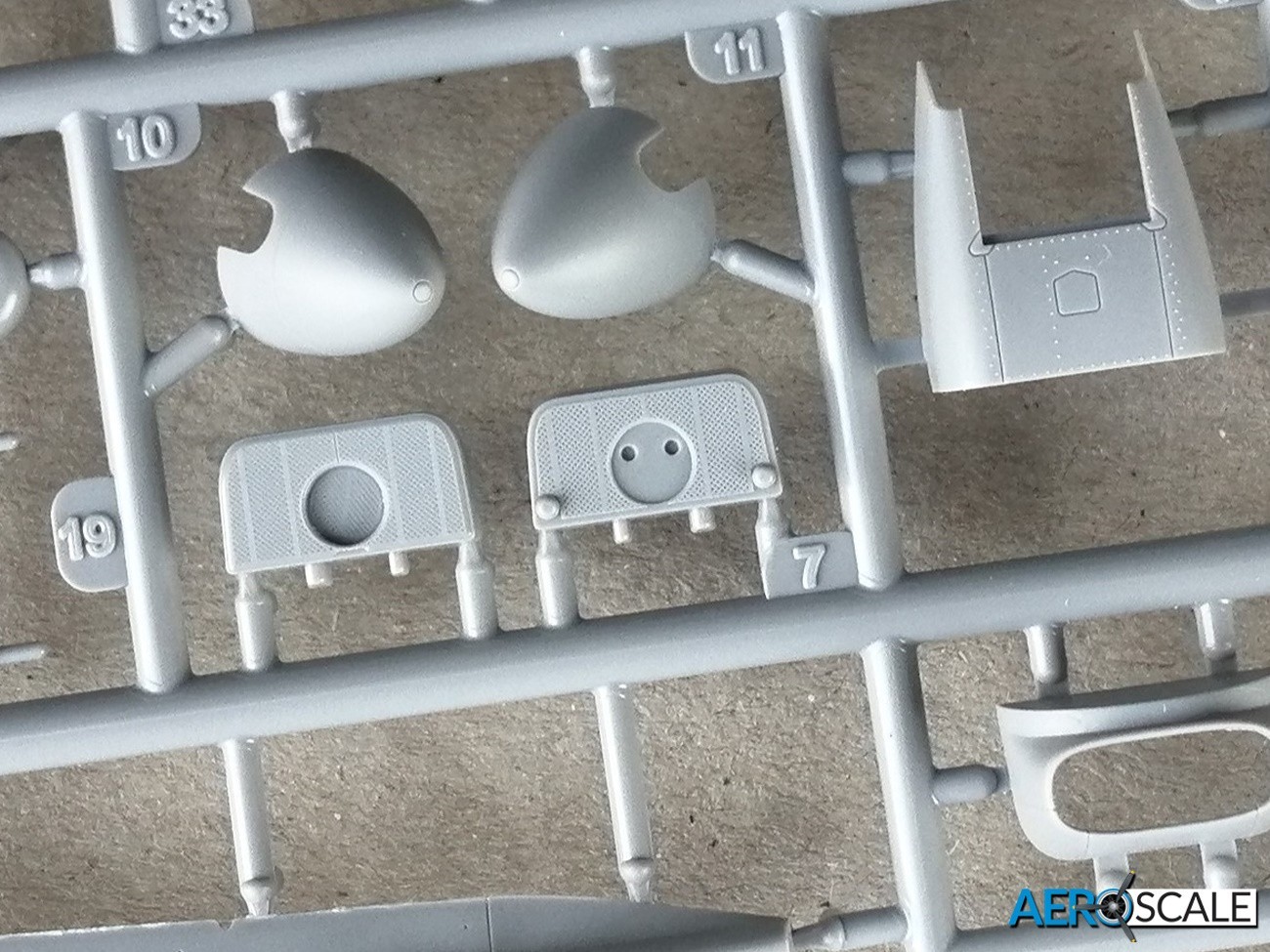
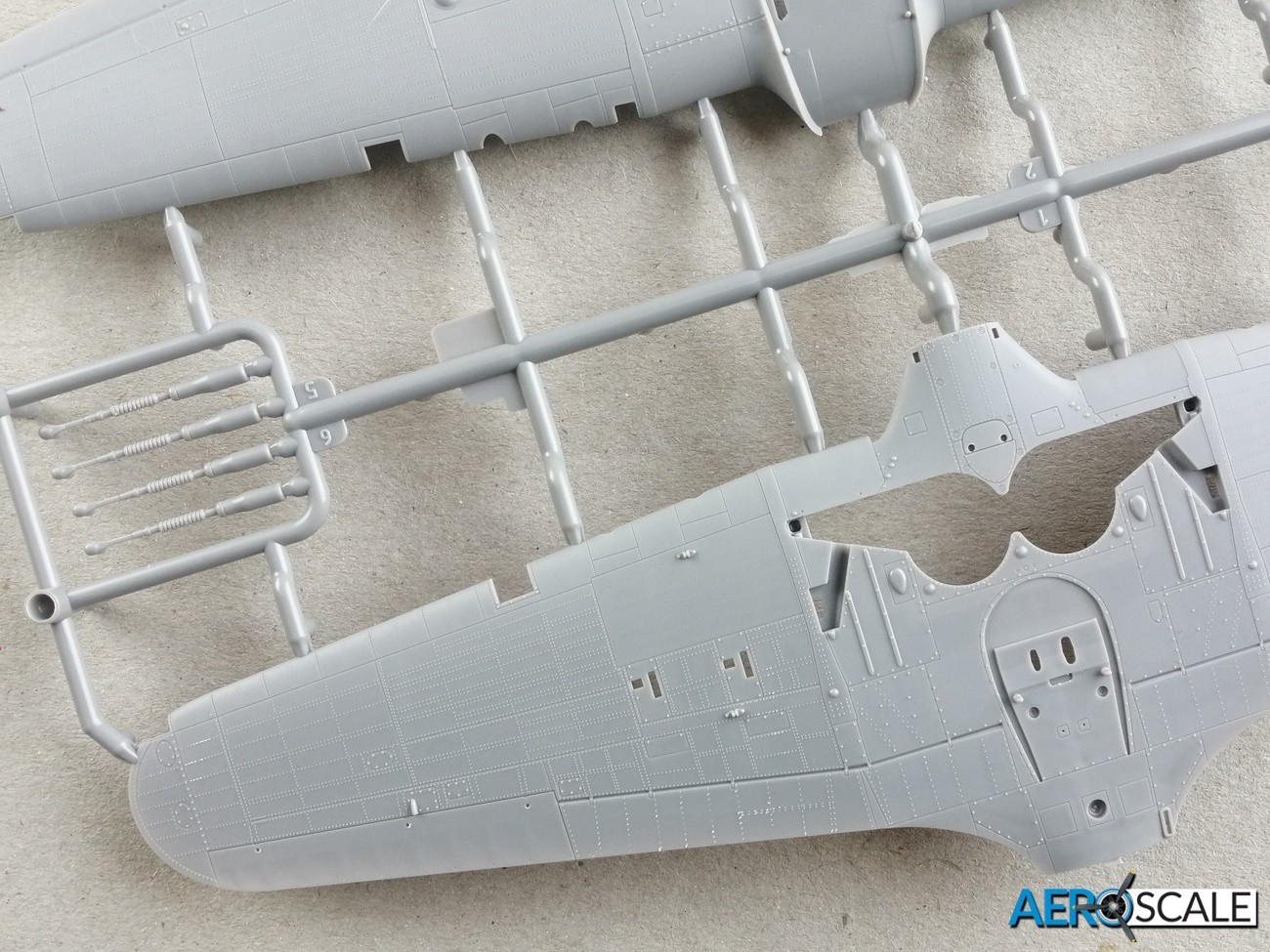

Arma Hobby has pulled out all the stops to bring the modeller a detailed cockpit solely primarily using injected plastic. There are around twenty-nine plastic parts to fit out the cockpit, and the cherry on top is a superbly detailed 3D printed pilots’ seat with seatbelts included. There is enough depth to the seat belts to pick out the detail with a paint brush. There is the option of using the four-part plastic seat along with the decal seat belts. Speaking of decals, there is one representing the instrument faces and switches of the instrument panel. Arma Hobby suggest cutting up the decal to ensure better adhesion over the low relief detail of the instrument panel. There are also decals for some of the instruments on the sidewall. The tubular framework inside the fuselage is nicely depicted. Most of the cockpit components are fitted on the bridge between the upper half of the wing. There is no floor as such, just a couple of runner boards for the pilot’s feet mounted on a tubular framework. The piping containing the control cables from the control stick and rudder pedals are also included. There is fine raised detail on the inside walls of the fuselage.
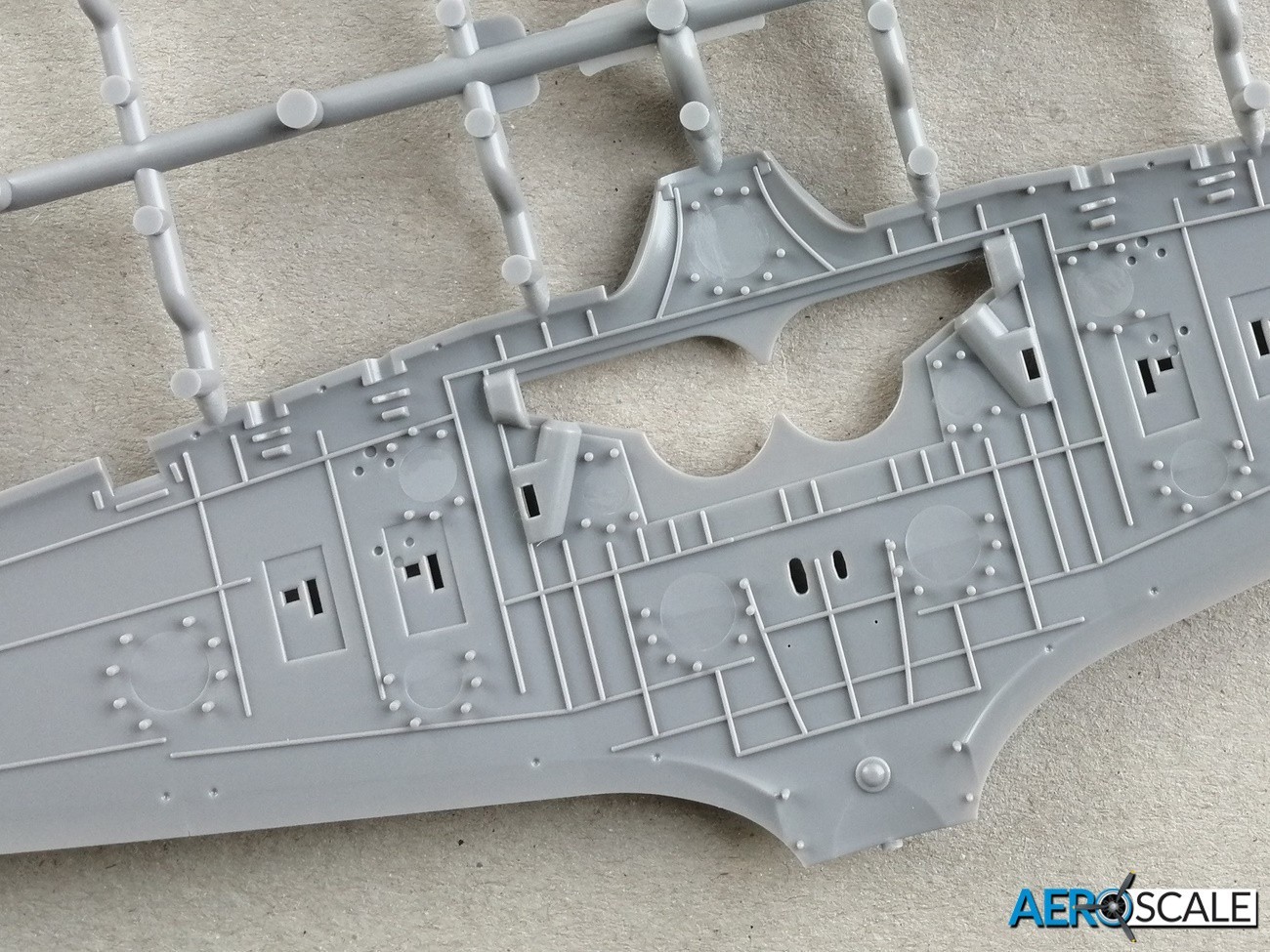
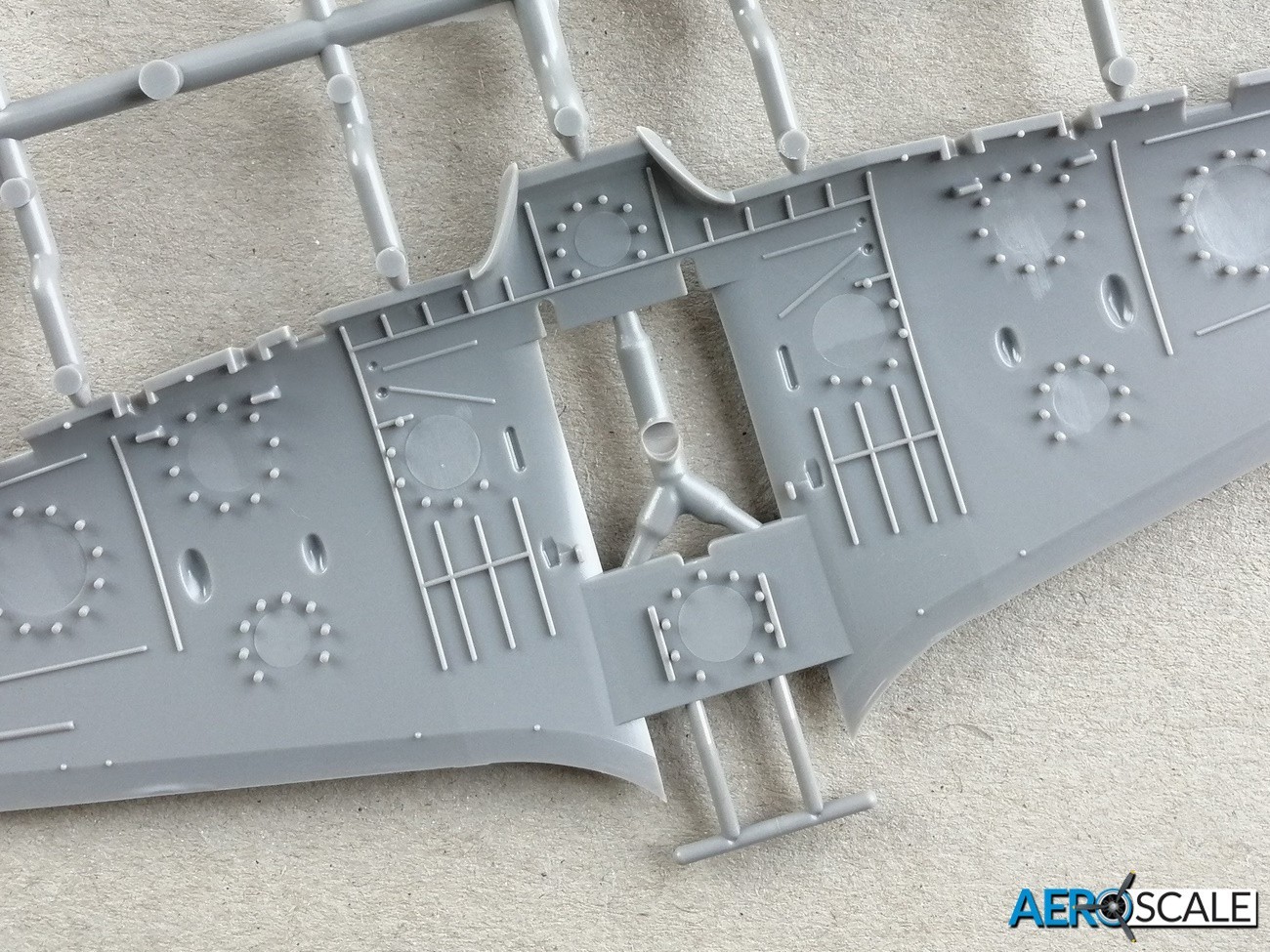

The transparent parts are crystal clear and commendably thin. The canopy and windscreen are separate. There are two canopies: one for the open position and the other for closed. There are paint masks for these clear parts. If you are displaying the canopy closed, then you need to remove some of the plastic on the cockpit sill. The instructions are explicit describing how much plastic to remove.

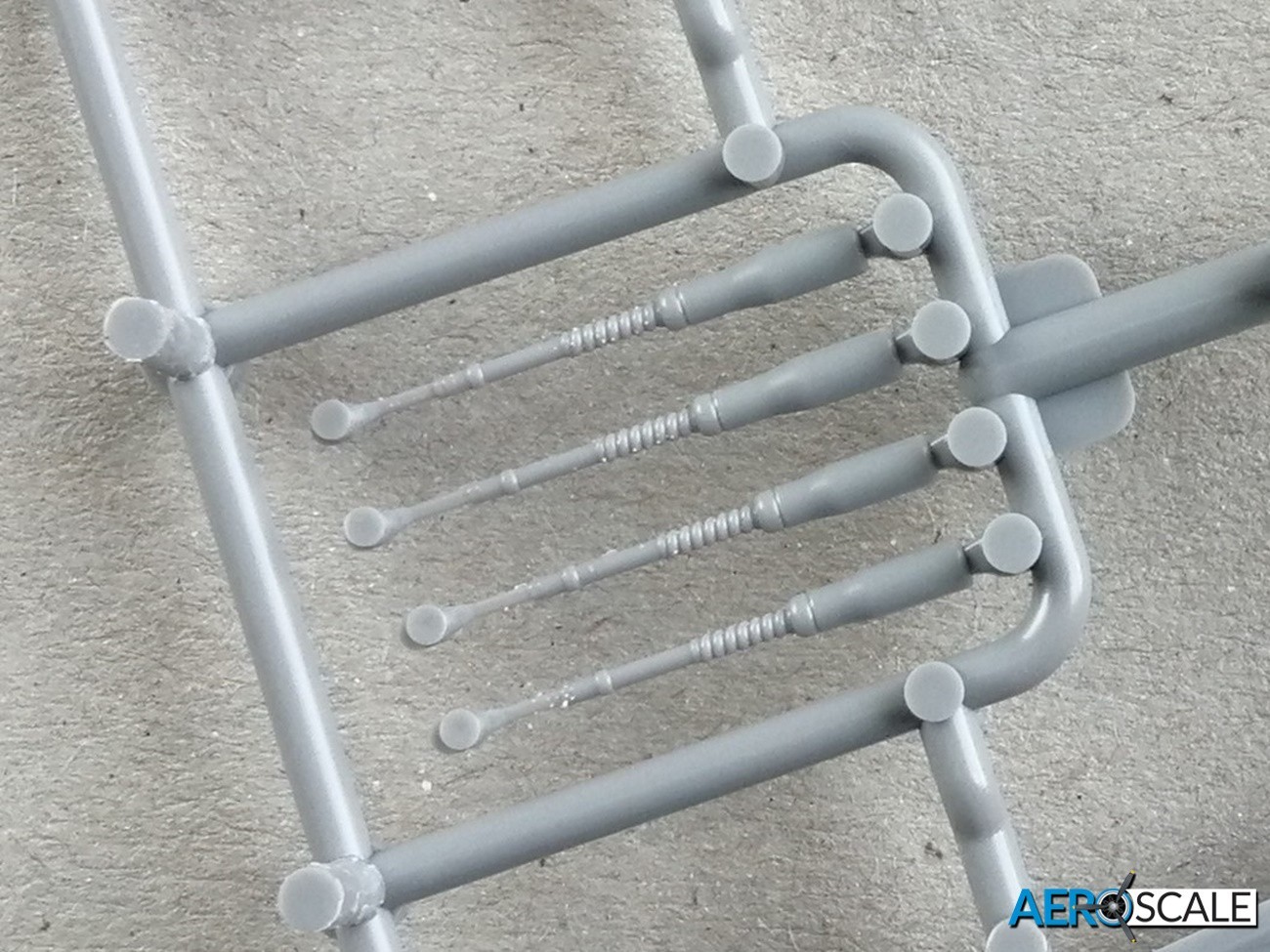
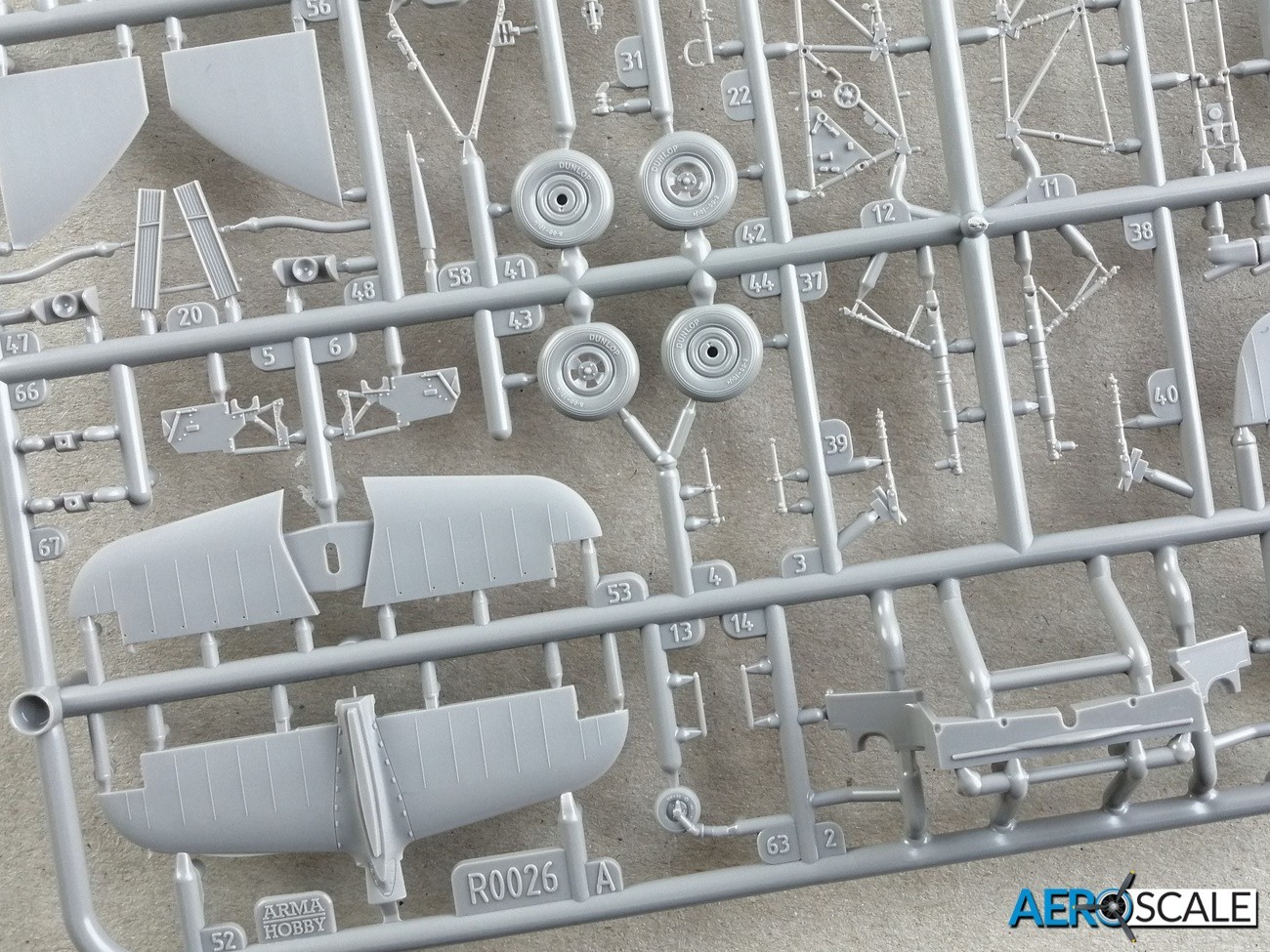
As mentioned Arma Hobby have done a stunning job creating the metal and stretched fabric look of the fuselage, There are a few locating tabs on the fuselage to aid the joining of the two halves. Arma Hobby has designed the rear lower ventral area of the fuselage to be a separate part. The Hurricane ventral area was re-designed somewhat over time. The most noticeable change was with the navalised Sea Hurricane with localised strengthening and the addition of an arrestor hook. Arma Hobby has gone for a 3D printed part for this area and why not. 3D printing has become so refined now and it features the same amount of detail as the plastic parts. Also included as a 3D part is the arrestor hook. The fit of the 3D ventral part is very good. There are a few trees to remove from the edge, but be aware there are some useful locating pins. The belly radiator fairing is separate and made up from four parts. The flap to the rear is separate and positionable. The radiator faces are made up from three parts. The moulded detail on the radiator faces is superb. Once completed its fitted to the recessed area in the belly. The carburettor intake fairing just in front of the undercarriage bay is made up from two parts. The prop is made up from four parts, with two alternate spinners. The oil collector ring behind the spinner is moulded onto the nose. The nose blisters are separate and there is the choice of plastic or 3D printed exhaust pipes. The 3D has the edge in detail as there is a slight recess at the end of the pipes. Some minor modifications need to be done to the fuselage. These include removing the raised vents on the side on the fuselage just above the wing root. A IFF aerial needs to be fabricated for options one and three. This is fitted under the fuselage. Also the dorsal navigation light needs to be removed for option three.

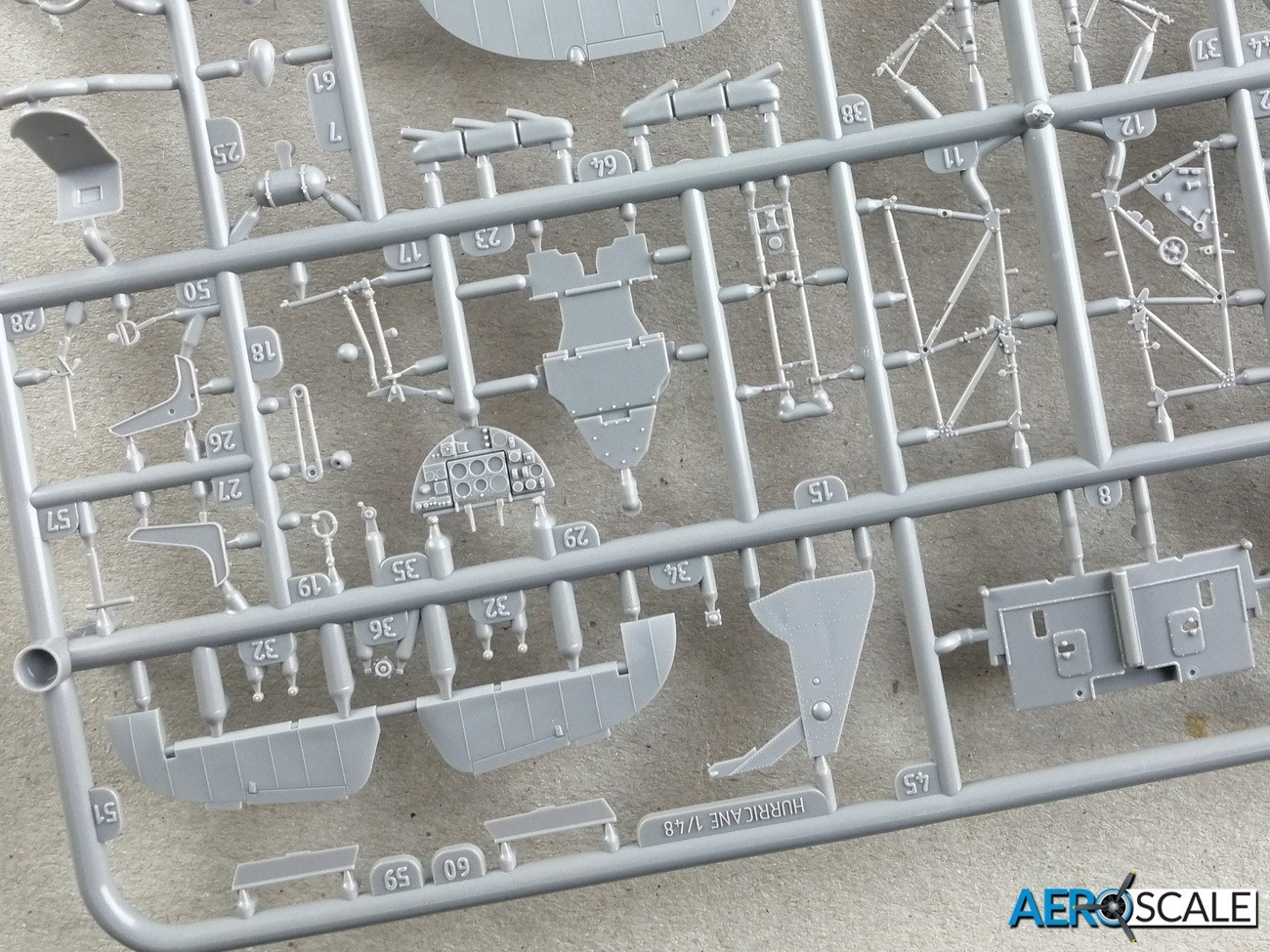
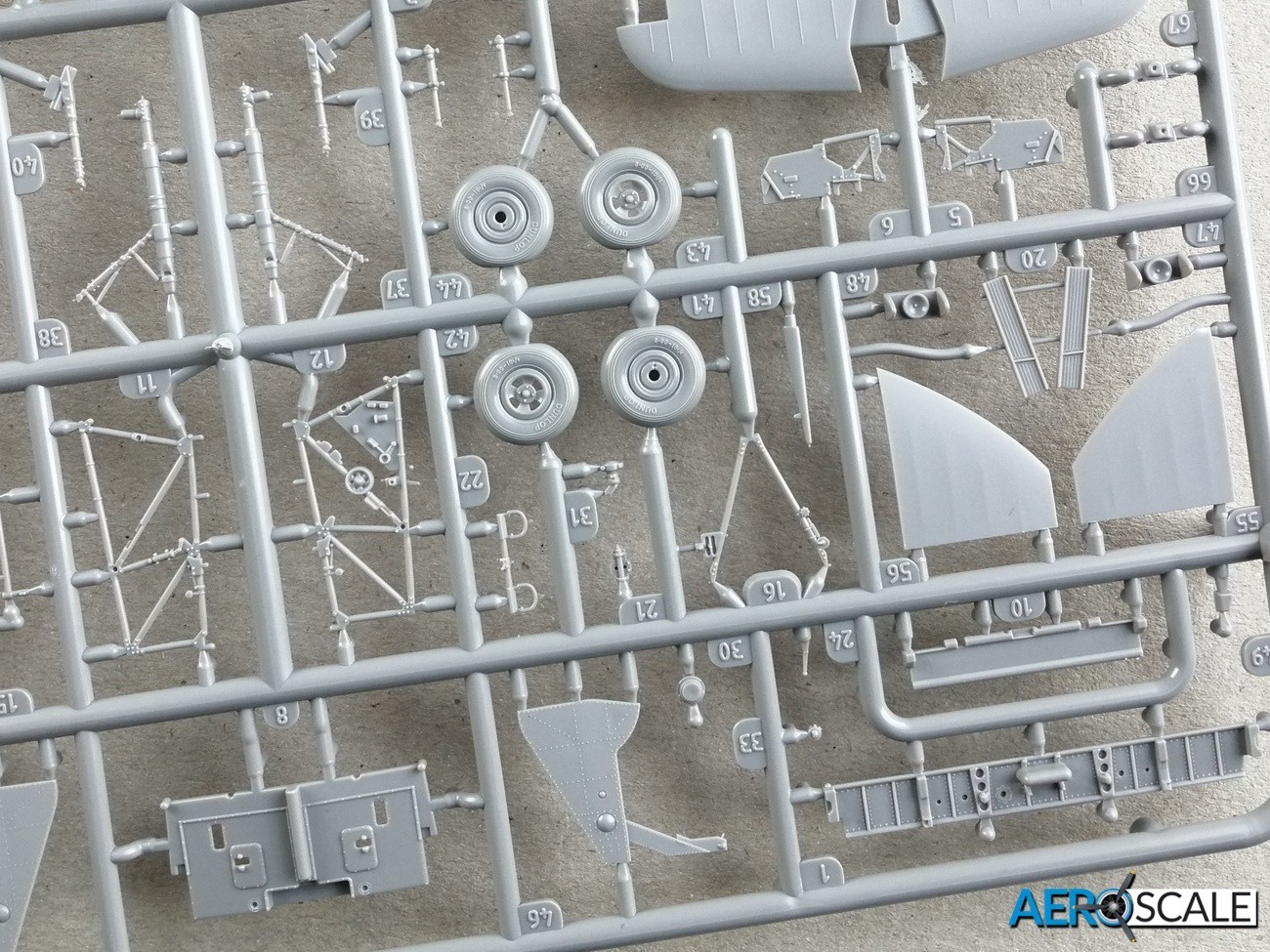
Both upper and lower wing parts are full span. The upper wing is bridged by base of the cockpit. The ailerons and flaps are moulded with the wings. Holes need to be drilled to fit the fuel tanks. Bombs are supplied, but not used with any of the marking options. Some detail needs to be removed from the wing to depict accurately the Mark IIc, the instructions provide full details. A nice touch is the separate landing light parts. Not just the clear parts, but the reflector is reproduced. You will need to remove a short length of the raised line on the inside of the upper wing, so that the landing light reflector is a better fit. There are two types of the canon barrels included with the kit as well as 3D printed canons. The 3D barrels have a slight edge in detail, having slight recess in the tip of the barrel. Option 3 has no outer canon barrels, just the fairing into the wing. Also separate is the gun camera fitted on the starboard wing.
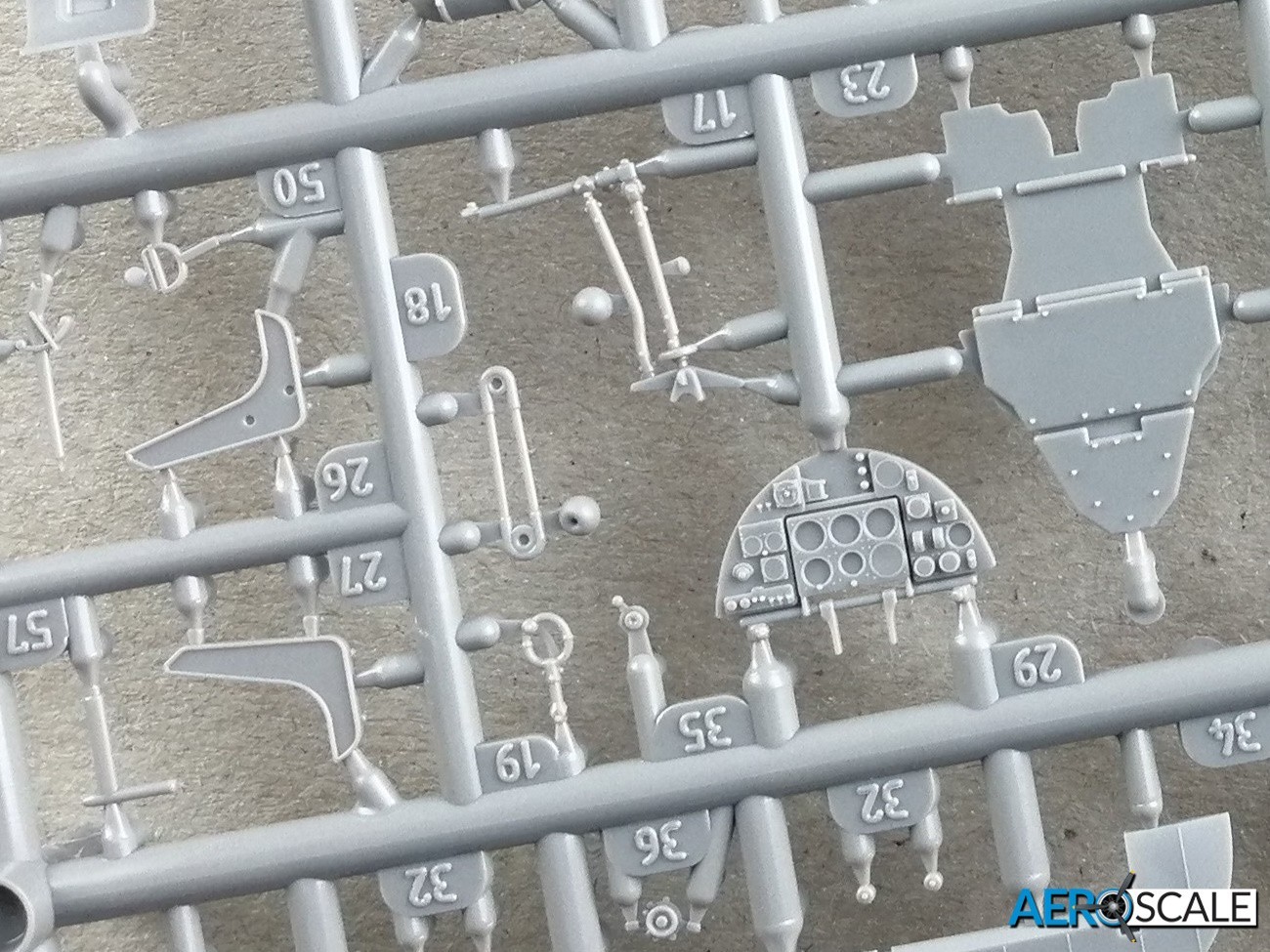

There is no skimping with the detail in the undercarriage bay. Detail in this area is made up from eleven parts and that does not include the undercarriage gear itself. The main undercarriage oleo has separate retracting jacks. The detail on the inside of the main undercarriage door is very good. The shape of the undercarriage doors needs to be altered with options one and three. The instructions provide details of how much plastic to remove. The weighted main wheels are split in half and masks are included. The manufactures name is a raised detail on the walls of the tyres. The one-piece tail wheel has paint masks too.
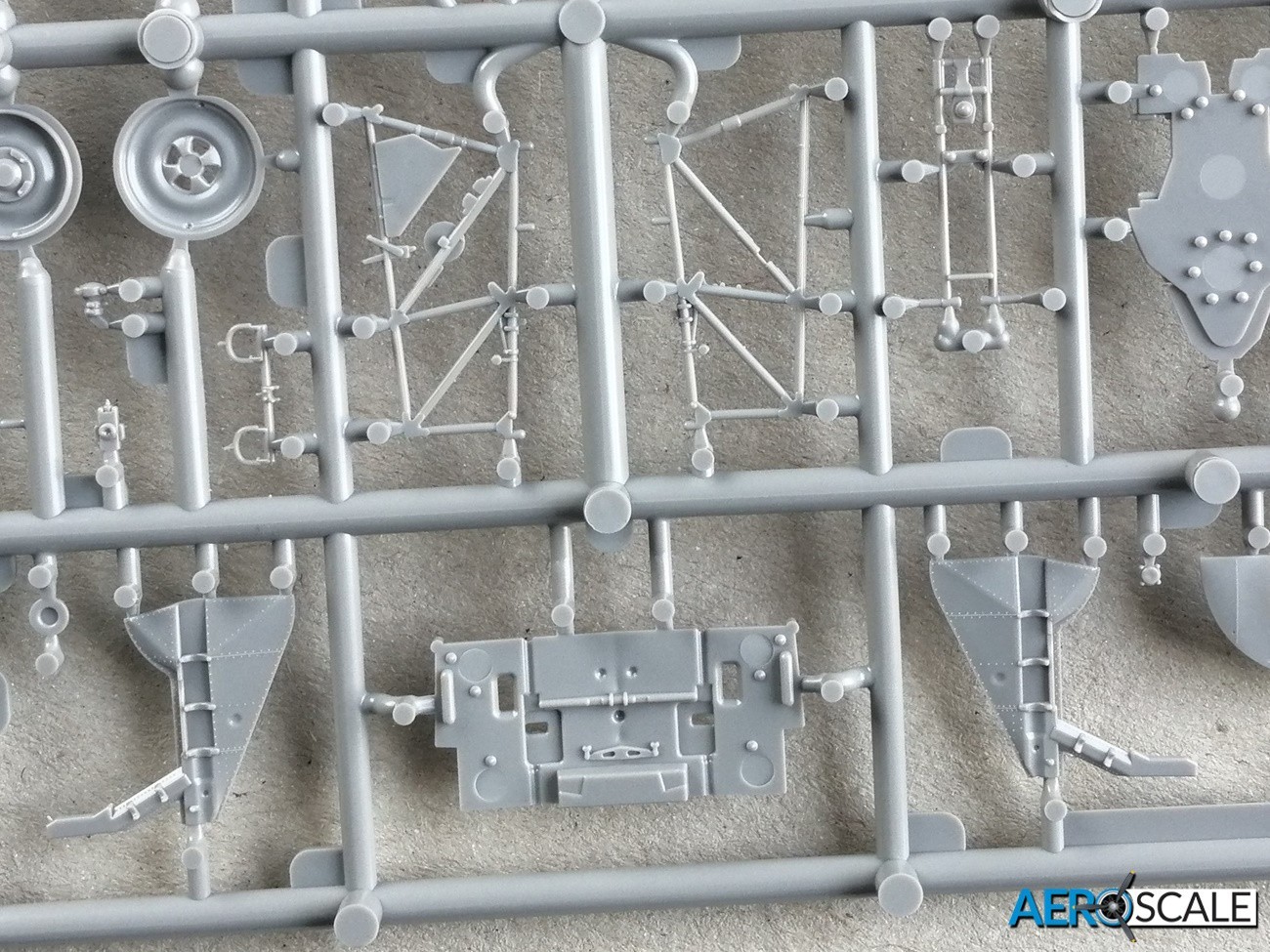
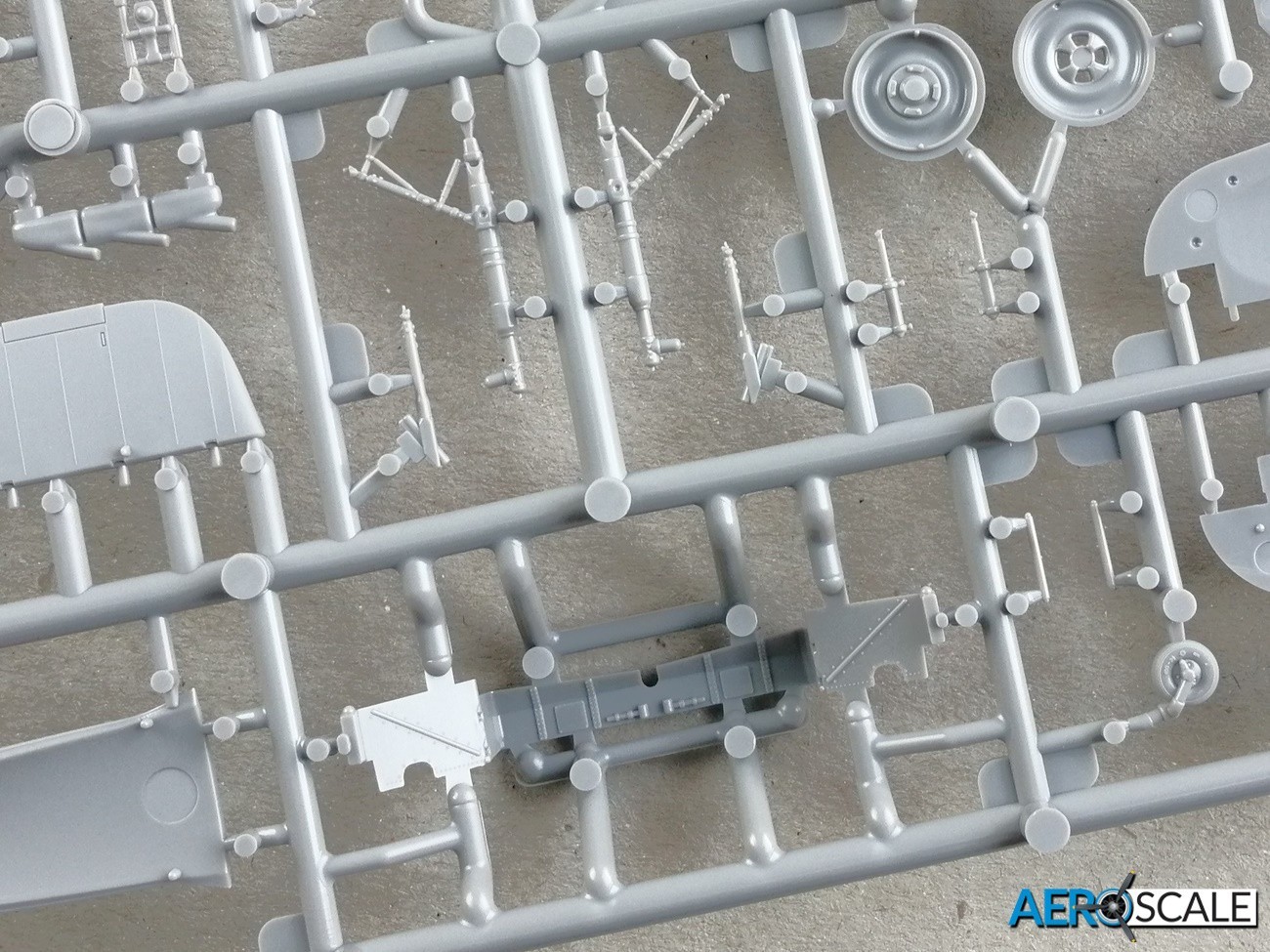
The fuel tanks are two-part with separate wing attachment pins. The bombs are four-part with commendably thin annular stabilisers, though these are not fitted on any of the marking options.
The 3D printed parts are a real bonus. 3D parts include: the lower ventral area, arrestor hook, engine exhausts, canon barrels and superb looking pilot’s seat. Although the matrix that the printed parts look complex, it rather easy to remove the numerous trees. Just make sure you identify all the parts before you start cutting.
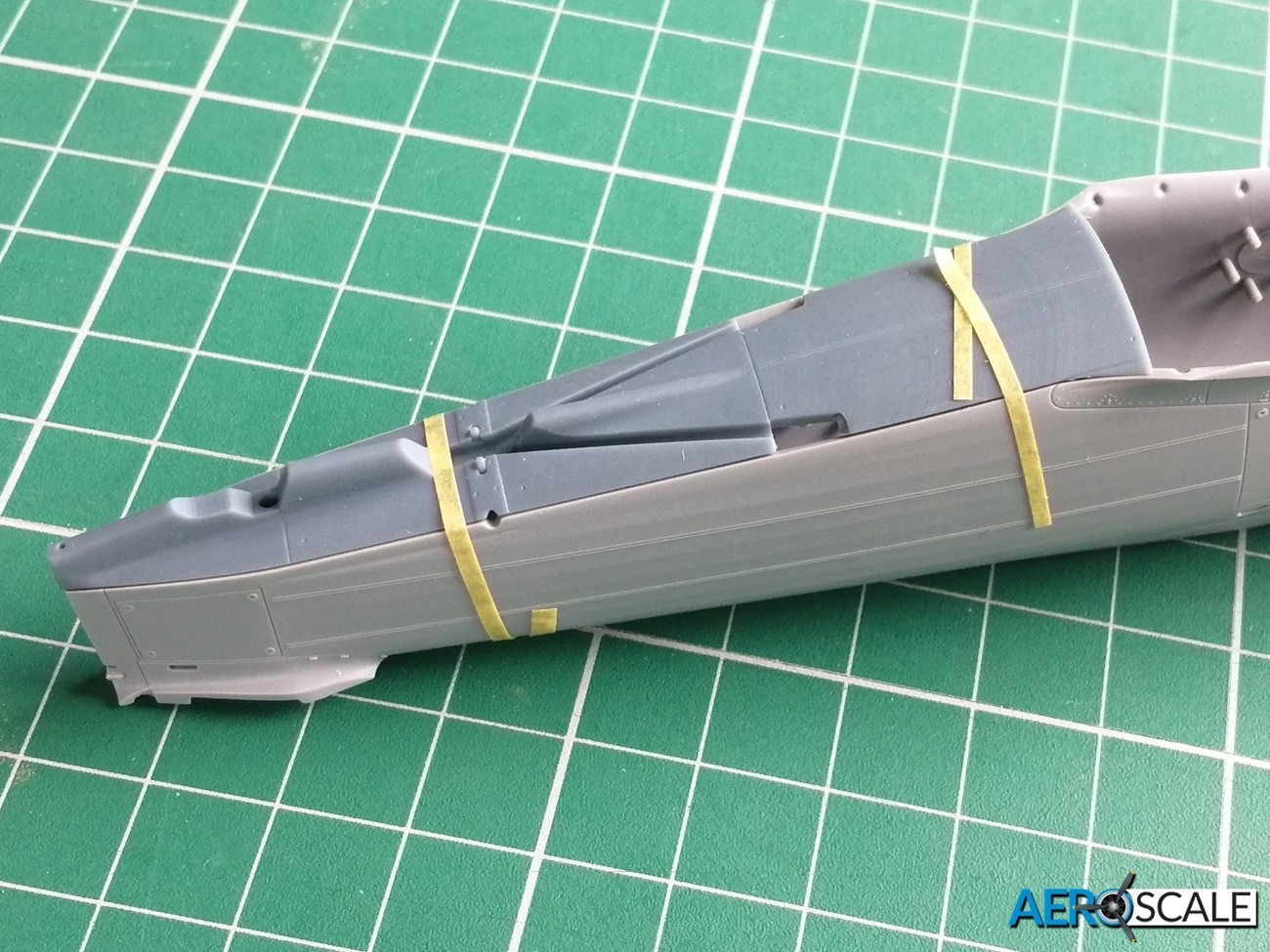
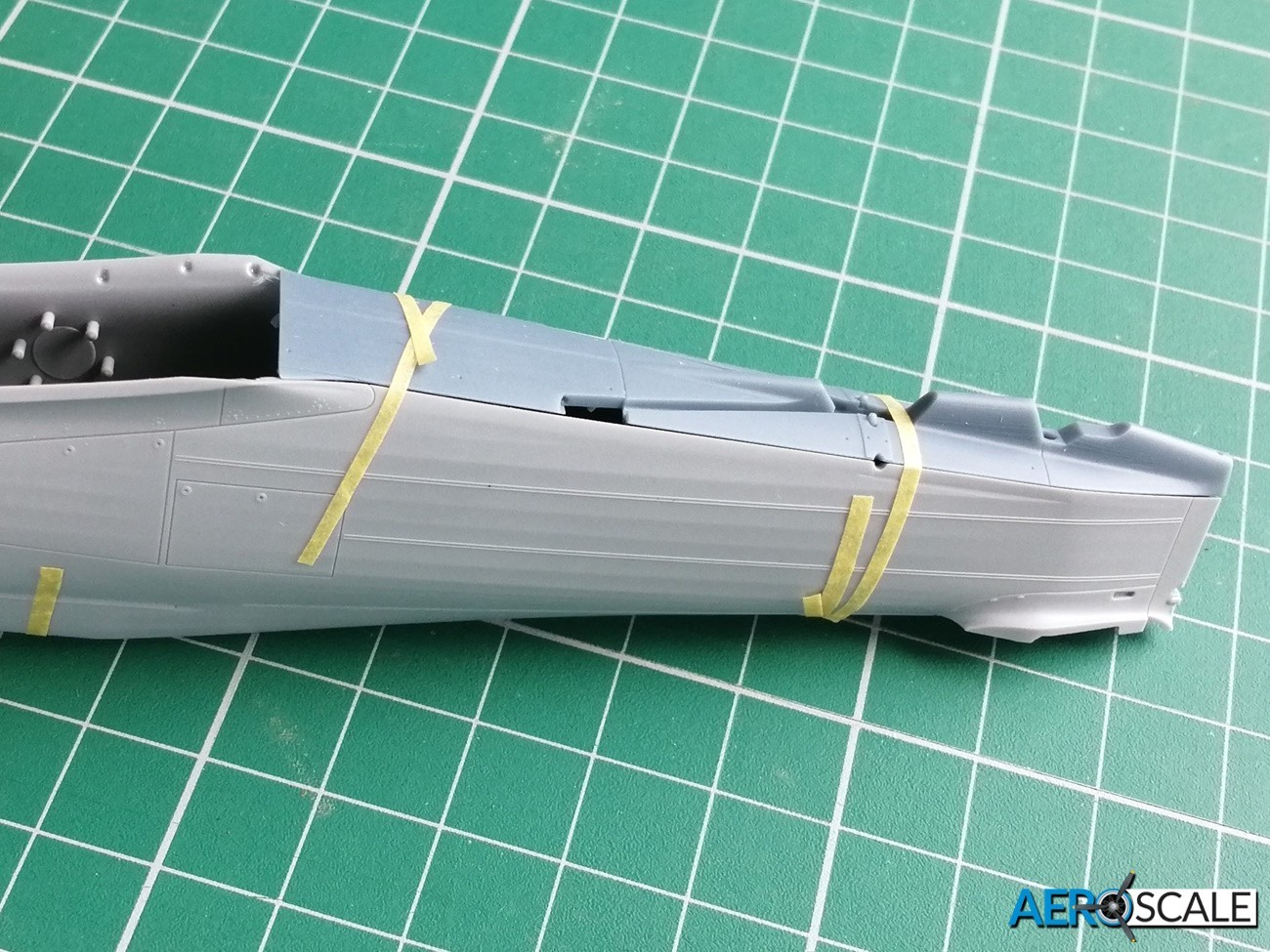

Decals are printed by Techmod. They look excellent with good colour density and the registration is excellent. The definition is very good particularly on the stencils and instruments. There is an interesting story attached to the decal set. Arma Hobby believed that the emblem on marking option one featured a horse. In fact, it was a tiger’s head, so Arma Hobby much to their credit changed the decal set causing a delay in the kits release. You will notice the horse emblem is still featured on the boxart and in the painting guide, just replace it with the tiger head decal. If you look closely at the decal sheet you will see Arma hobby has added three 1:72 scale tiger heads. These are for use with the corresponding 1:72 scale editions of the Sea Hurricane Mk.IIc. A nice touch from Arma Hobby.
There are Kabuki style paint masks for the windscreen, canopy, landing lights and main wheels as well as the tail wheels.
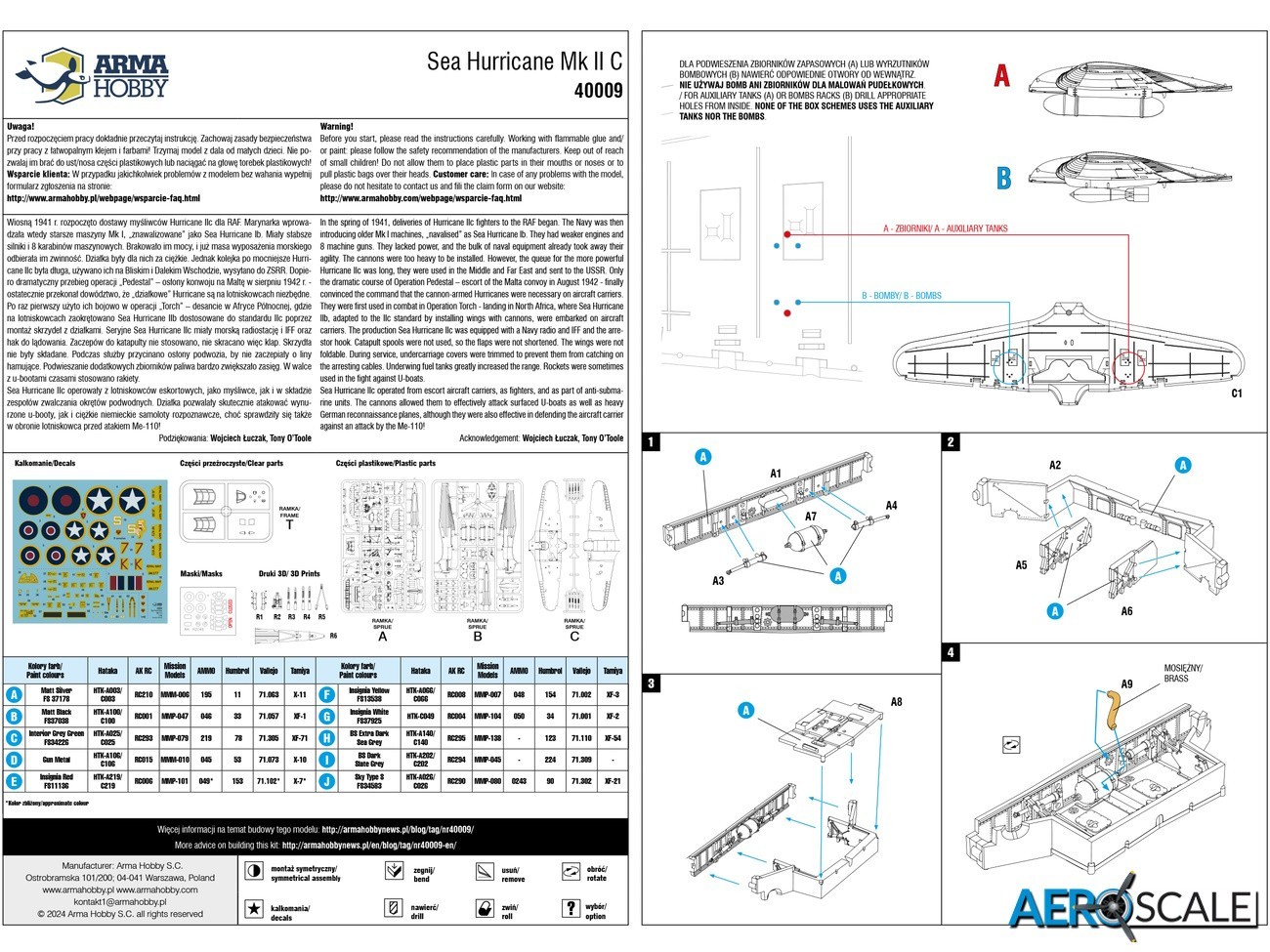
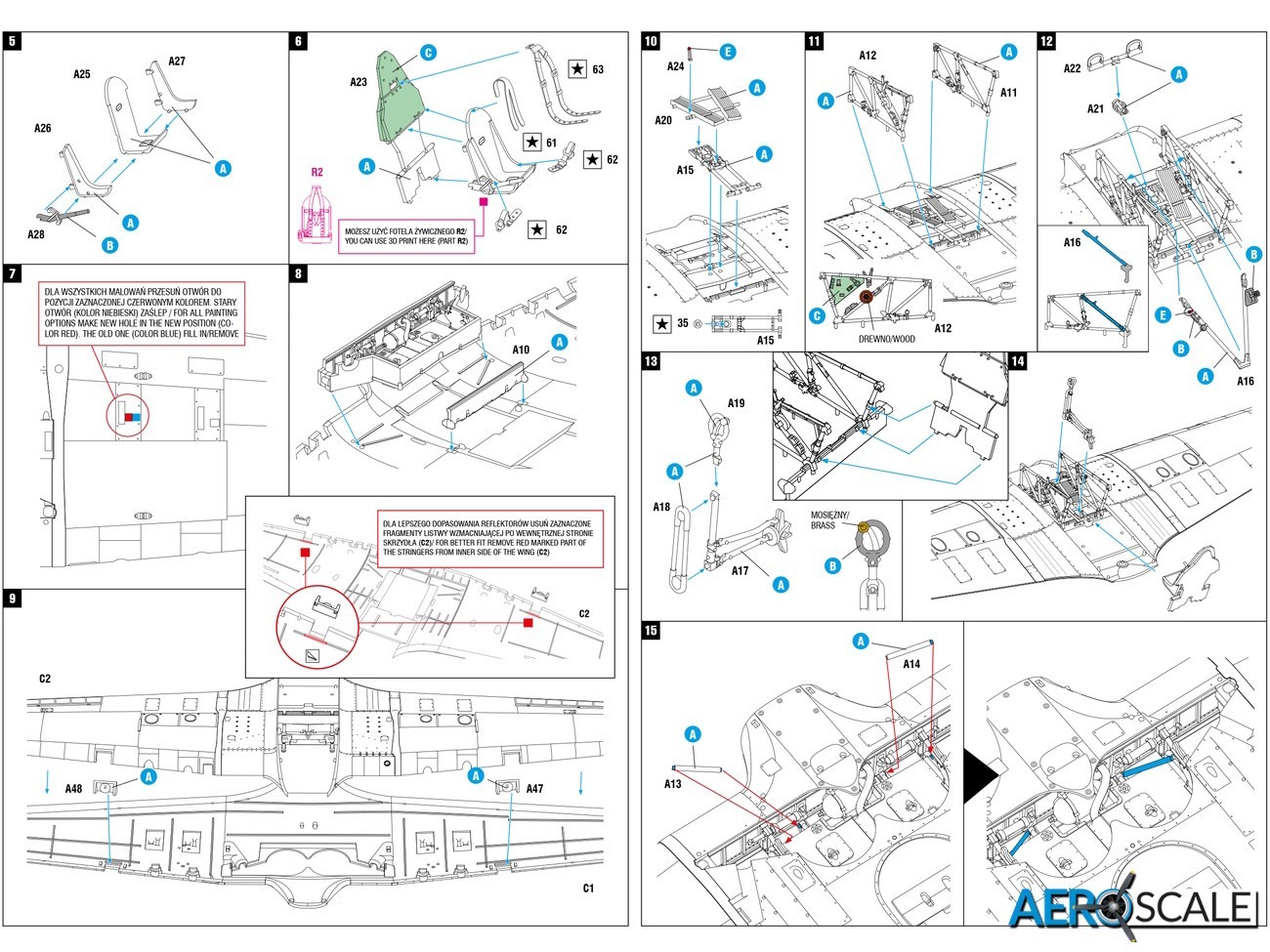
Instructions
The black line drawings are explicit with written instructions in English and Polish. There are several modifications and differences with the marking options so pay close attention to each stage of the build. There are several paint manufactures referenced in the instructions including: Hataka, AK RC, Lifecolor, Ammo, Humbrol, Vallejo and Tamiya. FS numbers are provided for all the colours except for extra dark sea grey and dark slate grey. The small erratum sheet is for the change of the emblem on option one from the horse motif to the tiger head.
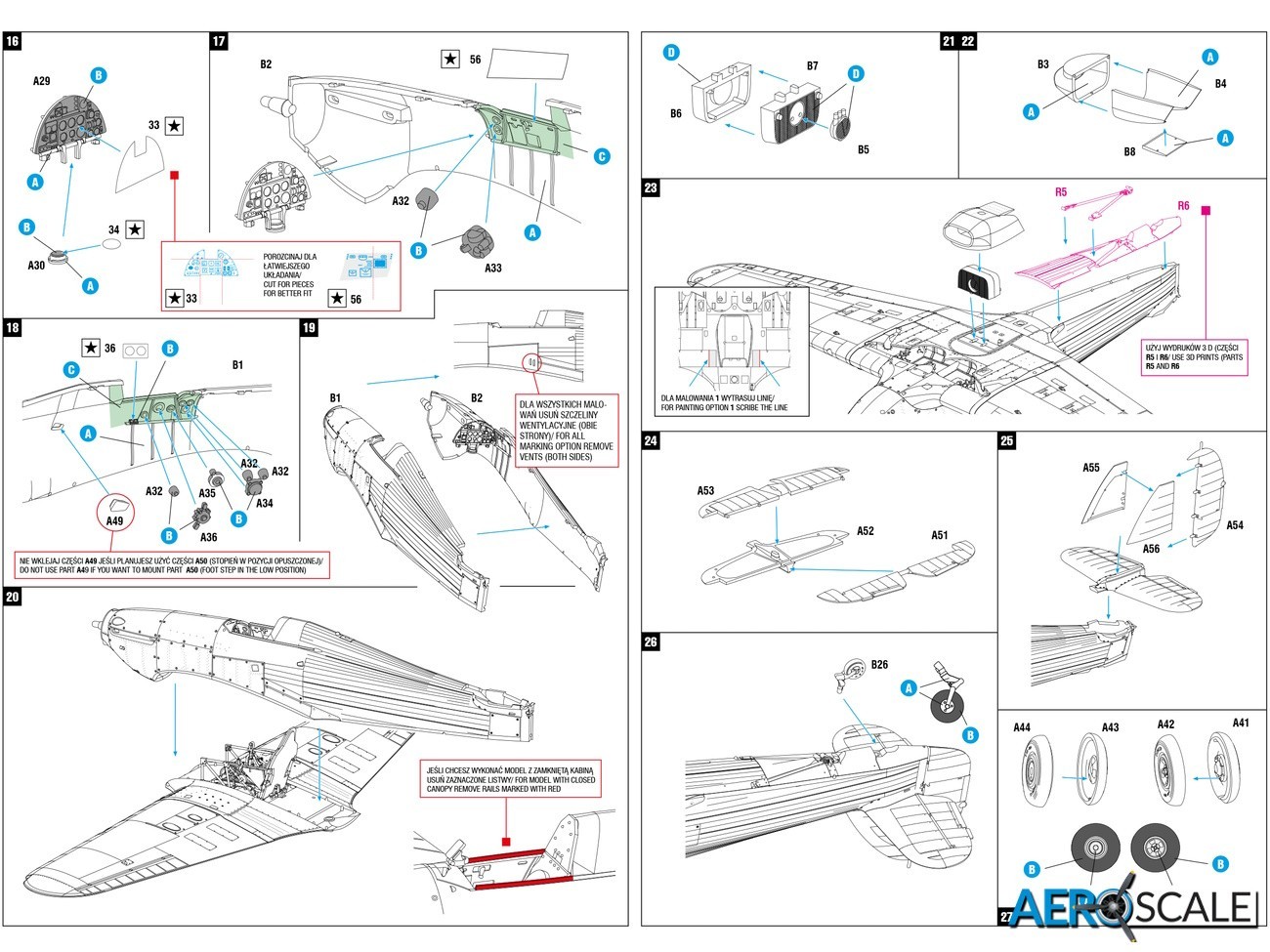
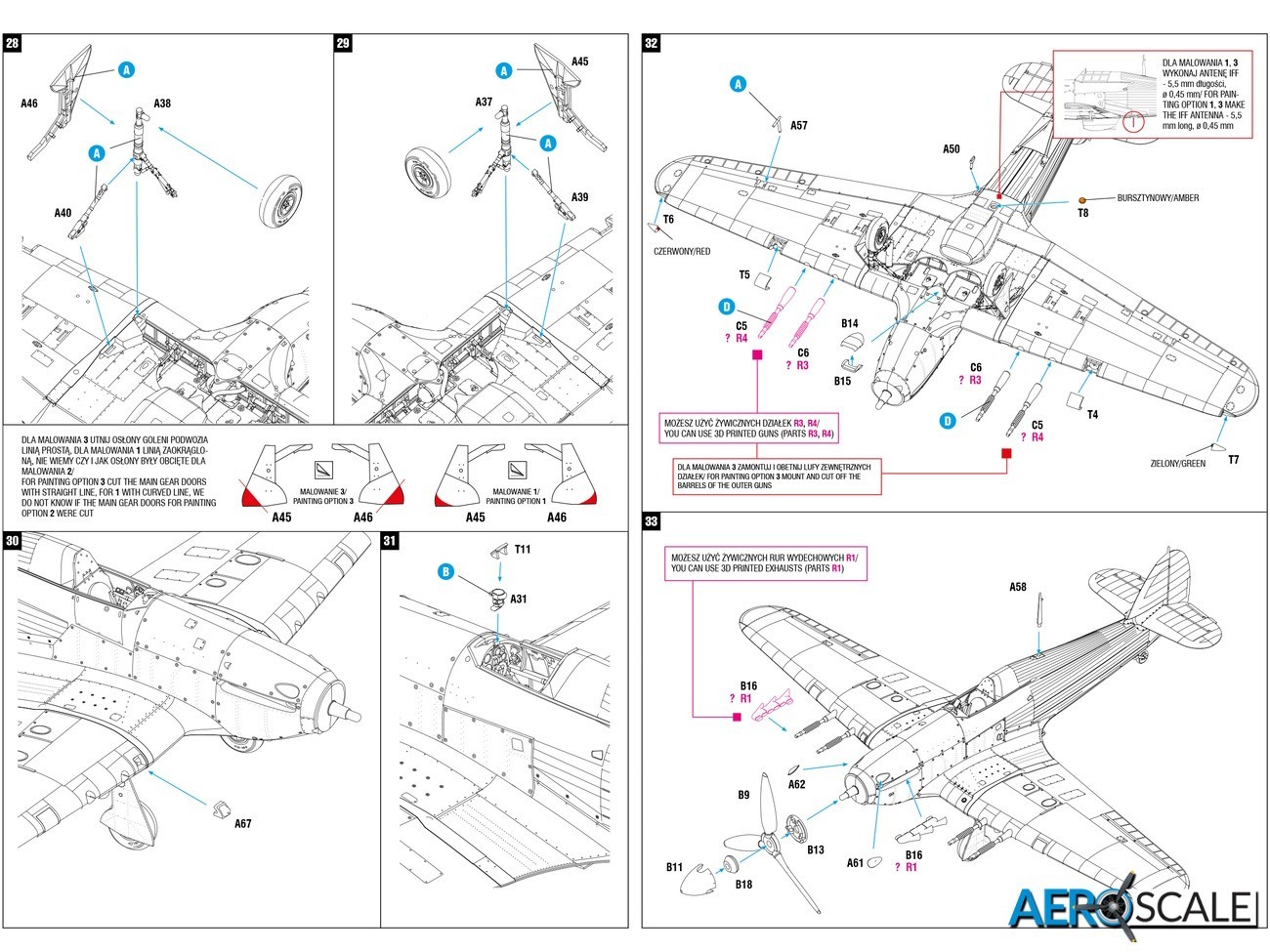
Marking options.
Arma Hobby has included three marking options with this release:
- Sea Hurricane Mk IIc - 835 Squadron, HMS Nairana, pilot Sub Lt. A.R. Burgham, June 1944
- Sea Hurricane Mk X - 804 Squadron, HMS Dasher, operation Torch, late 1942 r
- Sea Hurricane Mk IIc – 825 Squadron, HMS Vindex, early 1944
Option one is white overall, with the possibility that the undersurfaces could be ‘Sky type S’. Option two and three have upper surface disruptive camouflage of extra dark sea grey and dark slate grey with ‘sky type S’ under surfaces. Even though option two has the American markings, it was operated by the Royal Navy during Operation Torch

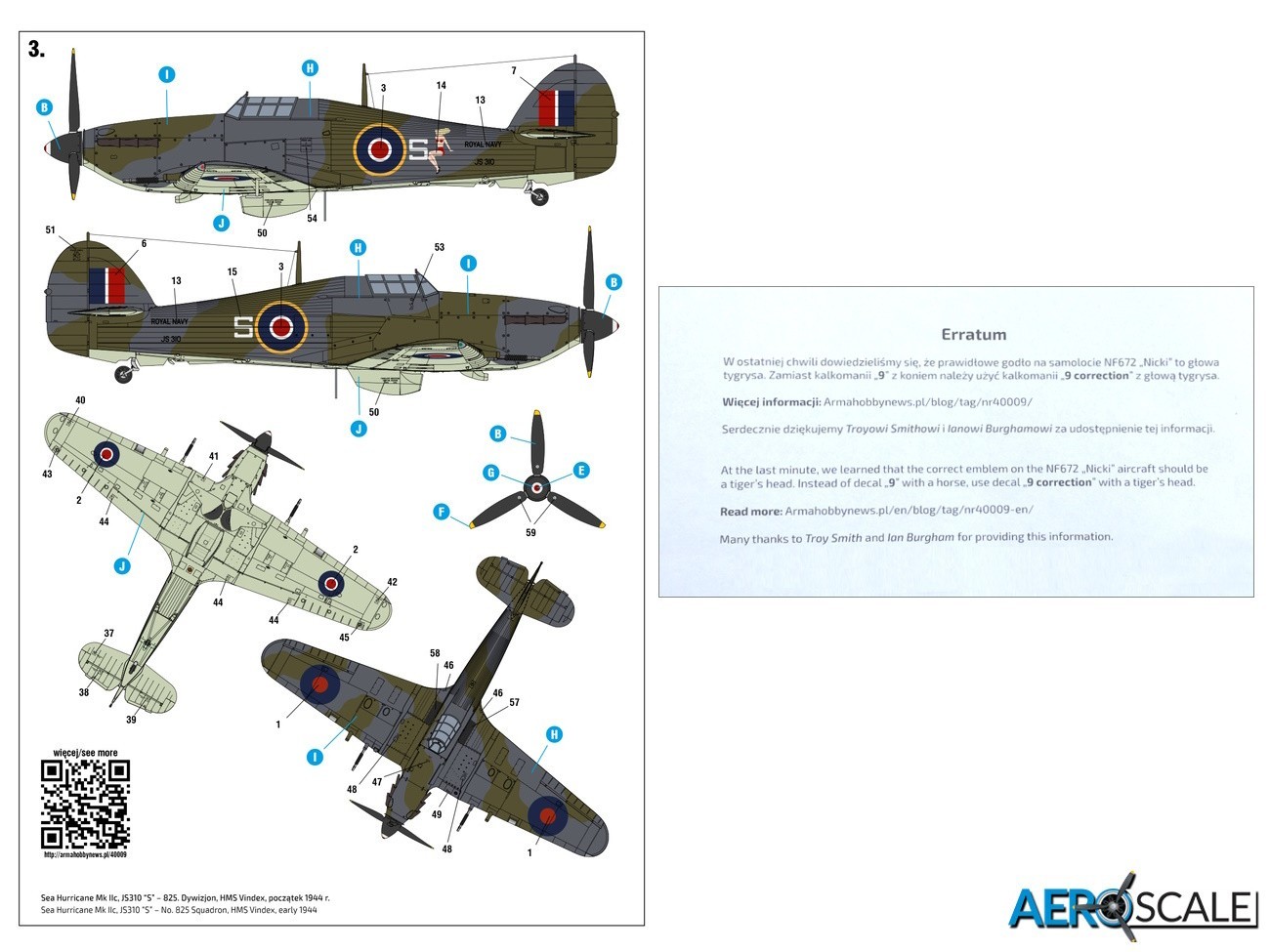
Conclusion
Wow this is a superb release from Arma Hobby. It is fantastic to now see a quarter scale Sea Hurricane IIc in the Arma Hobby catalogue. Arma Hobby’s attention to detail is exemplary, leaving no stone unturned in their quest for accuracy. The excellent fitting parts will make the building process all that more pleasurable and you cannot fault the choice of markings.
The new tool series of quarter scale Hurricane Mk.II’s, was awarded the prestigious “Model of the Year 2024” medal from the German magazine Modell Fan. A highly recommended release from Arma Hobby
Check out Arma Hobby’s test build of the 1:48 scale Hurricane Mk.IIc.
Its well worth looking at the Arma Hobby blog concerning this release. This kit is available from Arma Hobby and the price is currently €55.68.
Many thanks to Arma Hobby for providing this sample for review.
40009 - Hawker Sea Hurricane Mk IIc – 1:48
Please remember, when contacting retailers or manufacturers, to mention that you saw their products highlighted here – on Aeroscale.




















